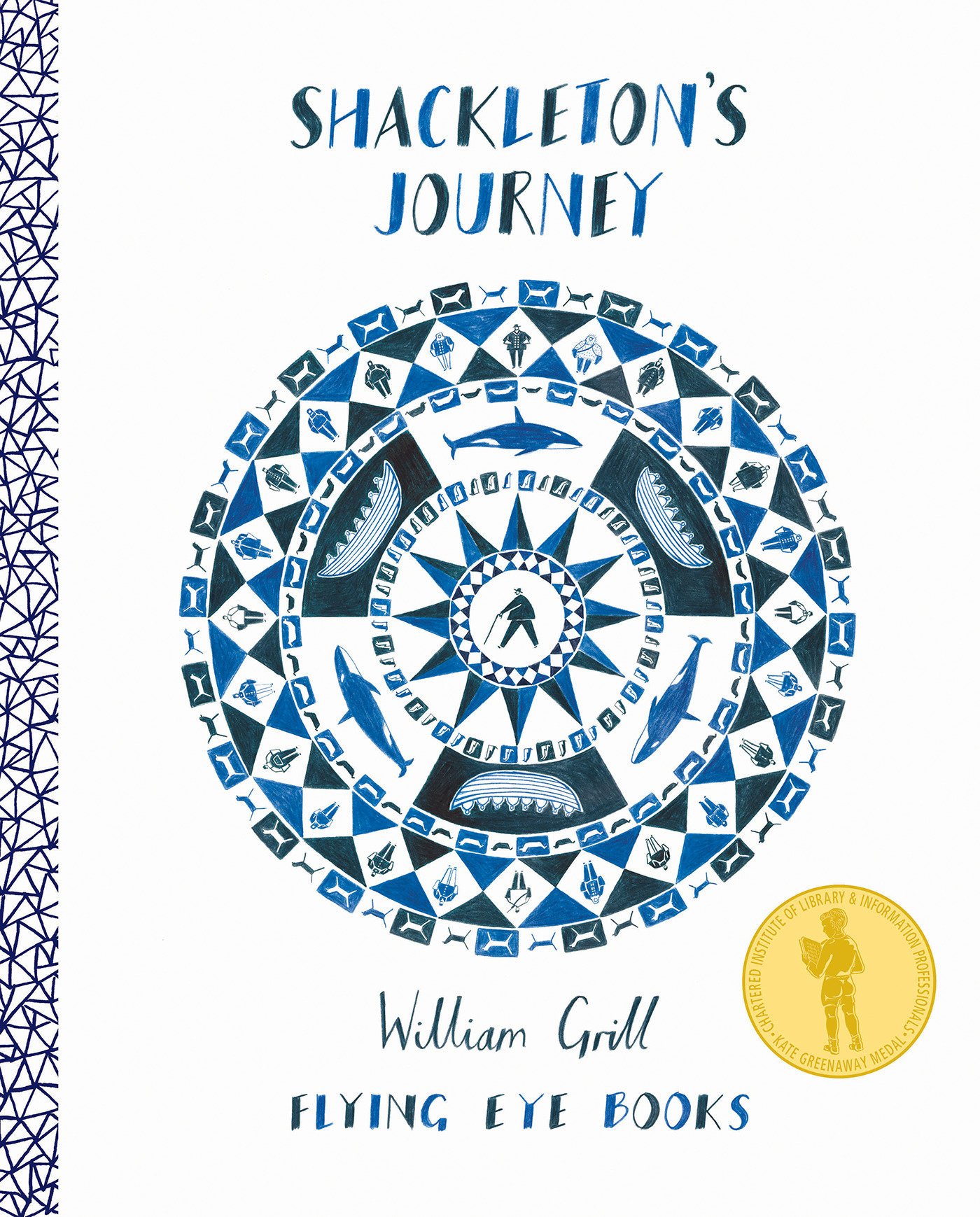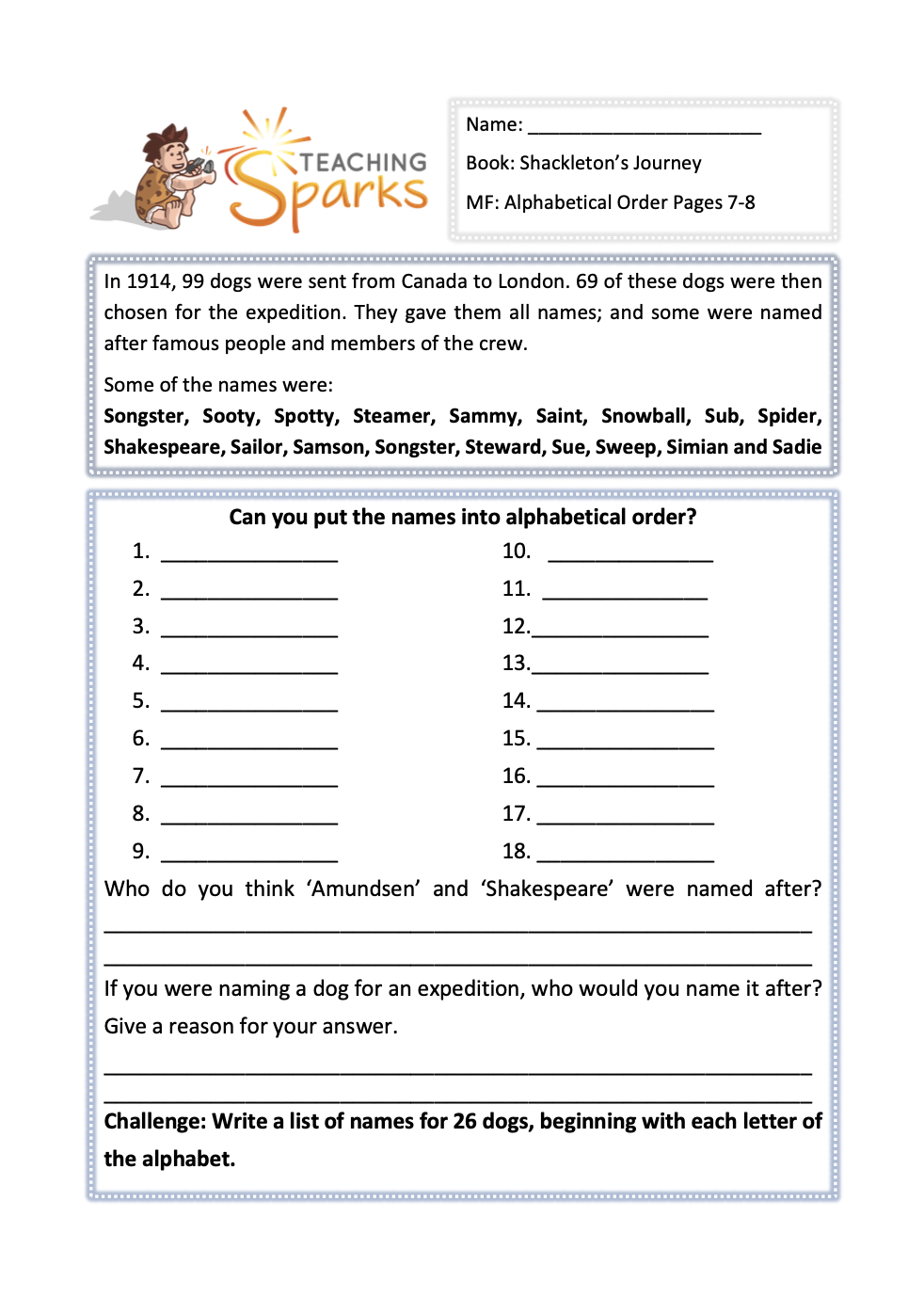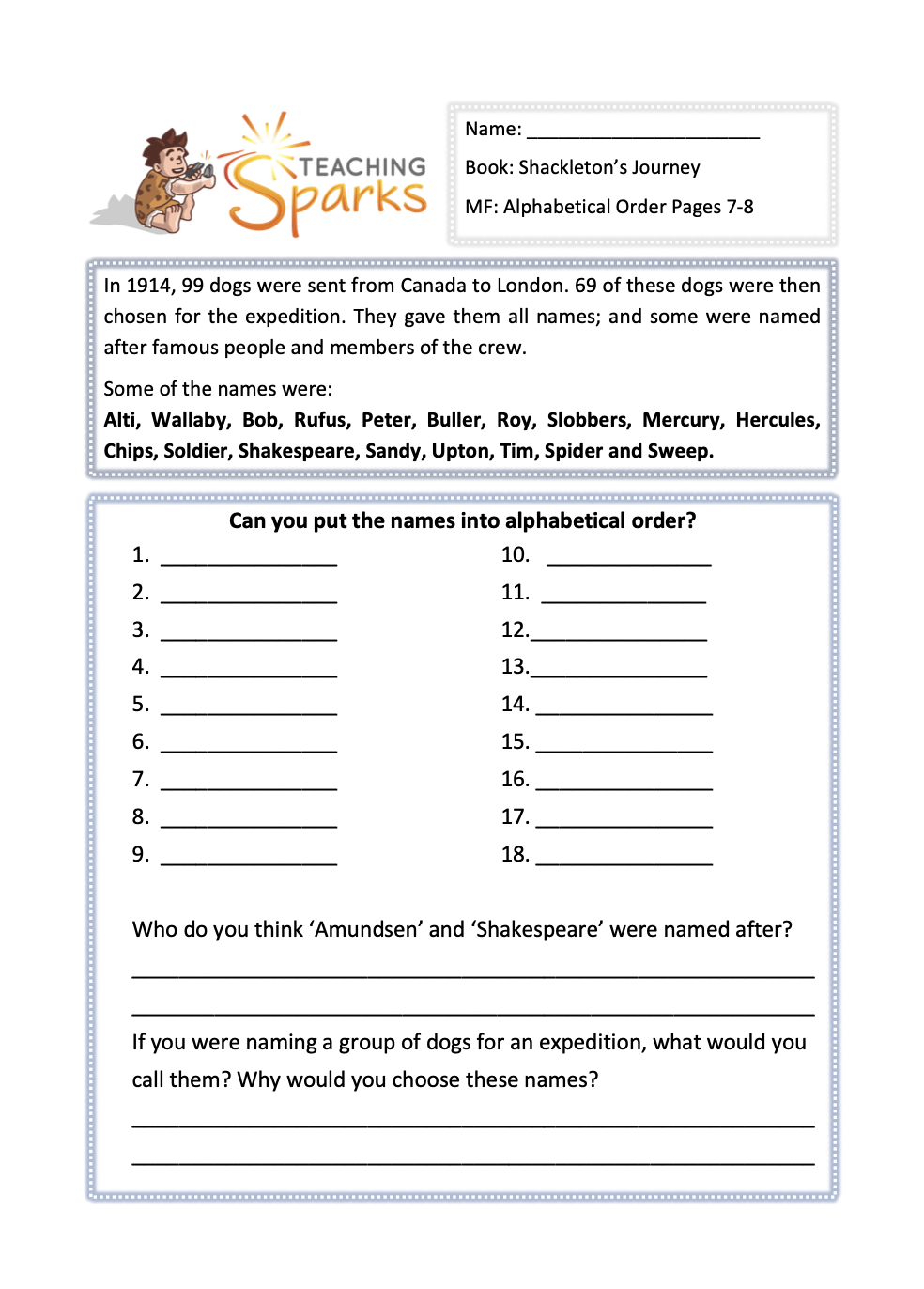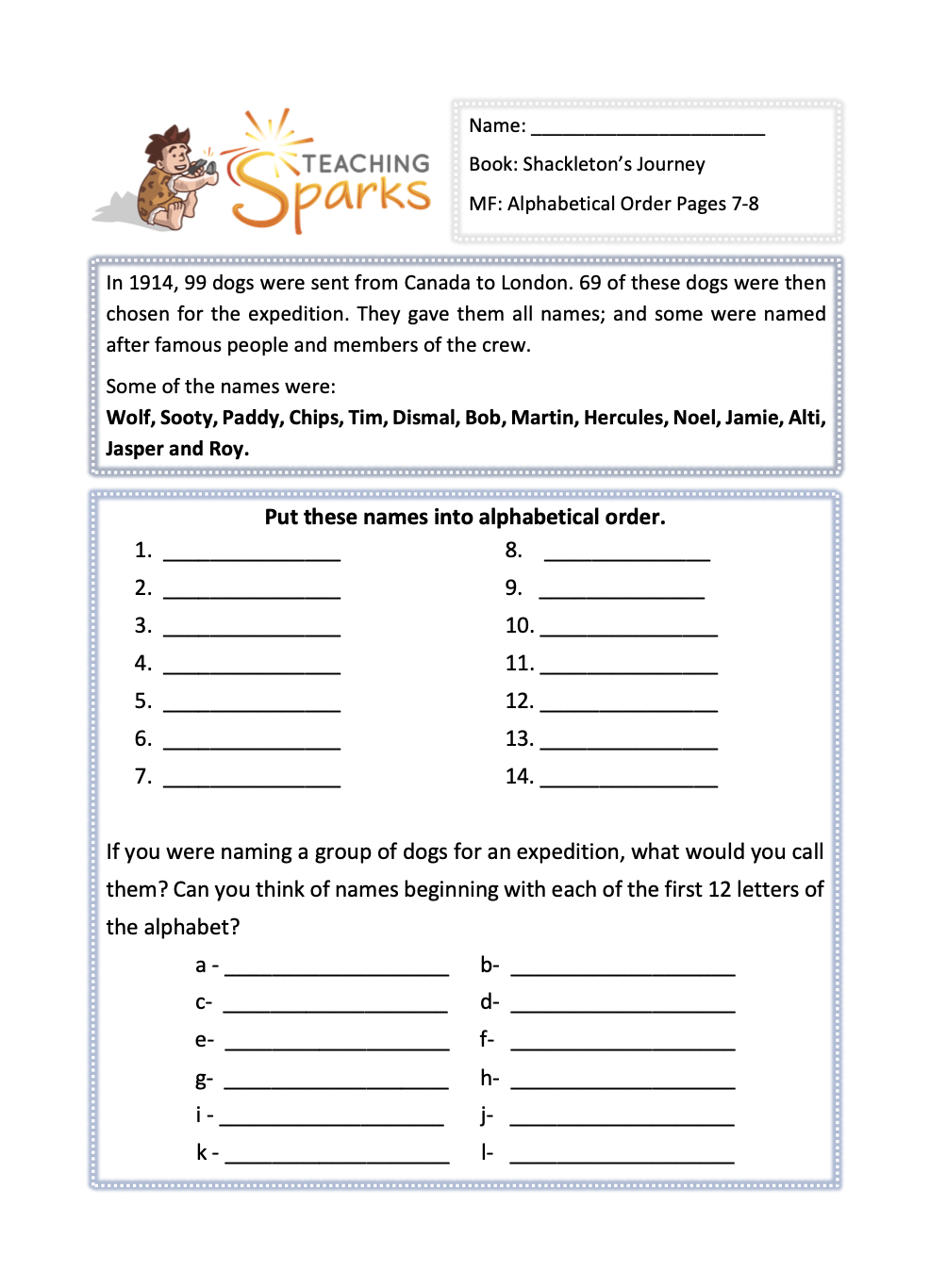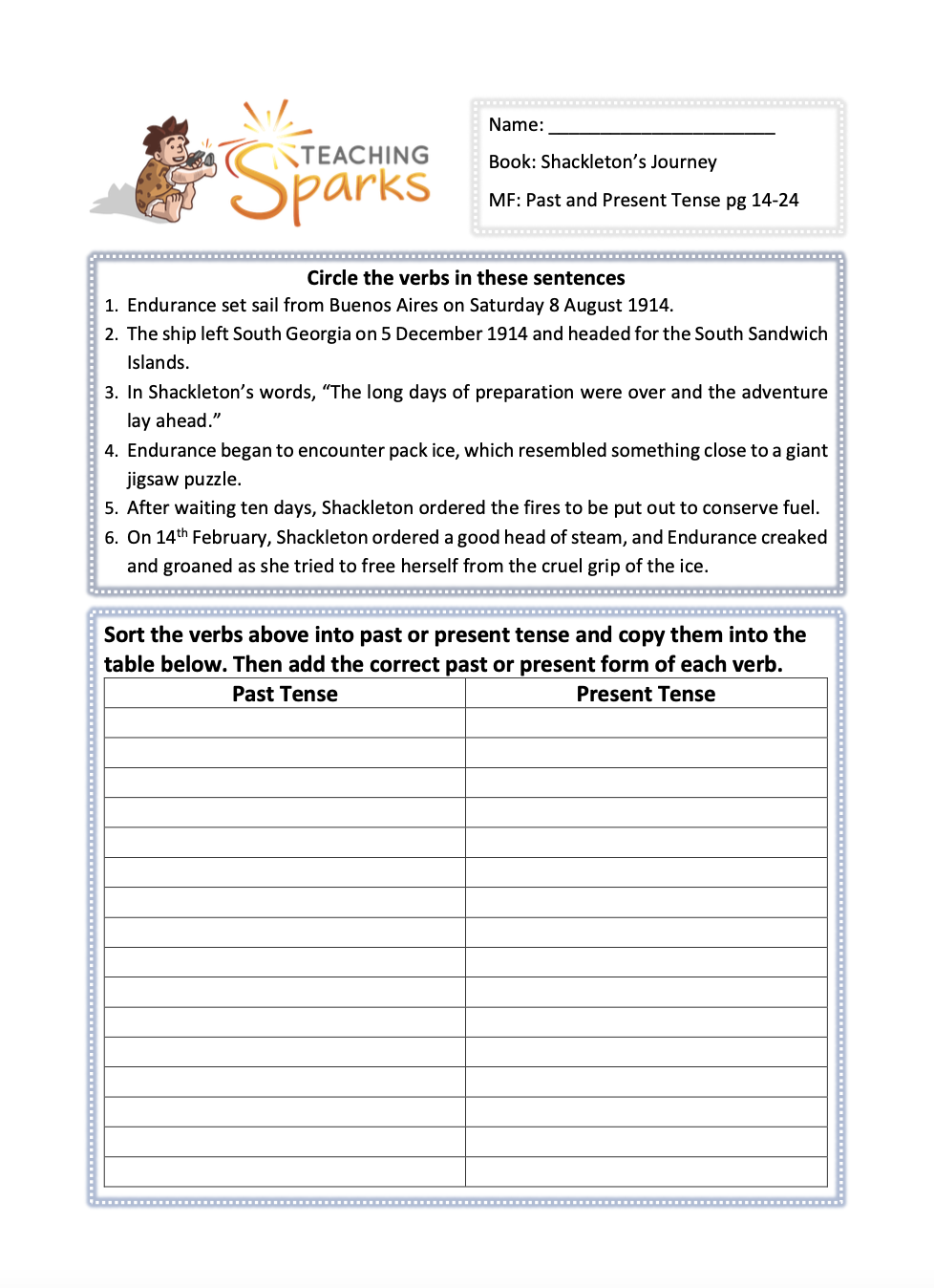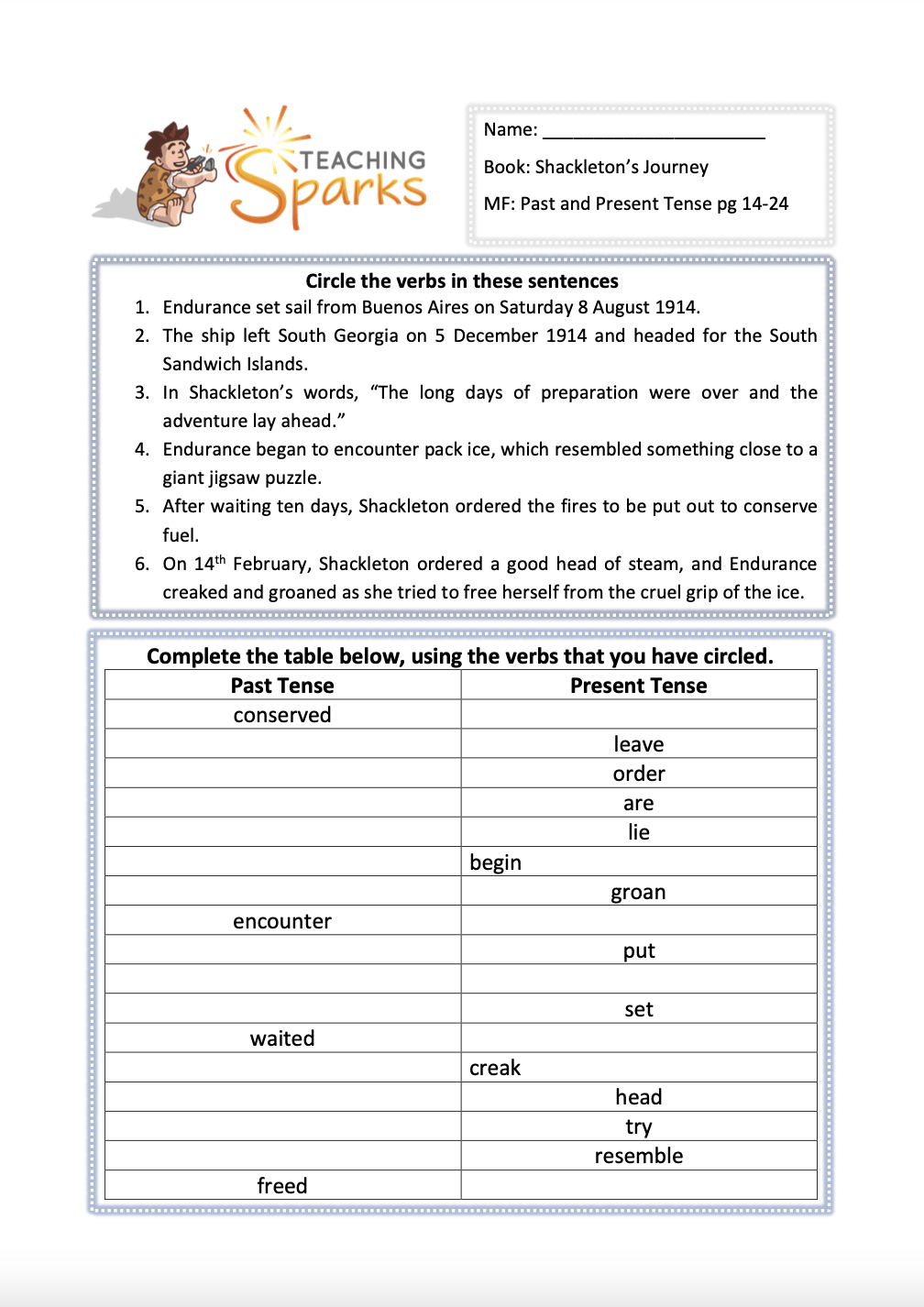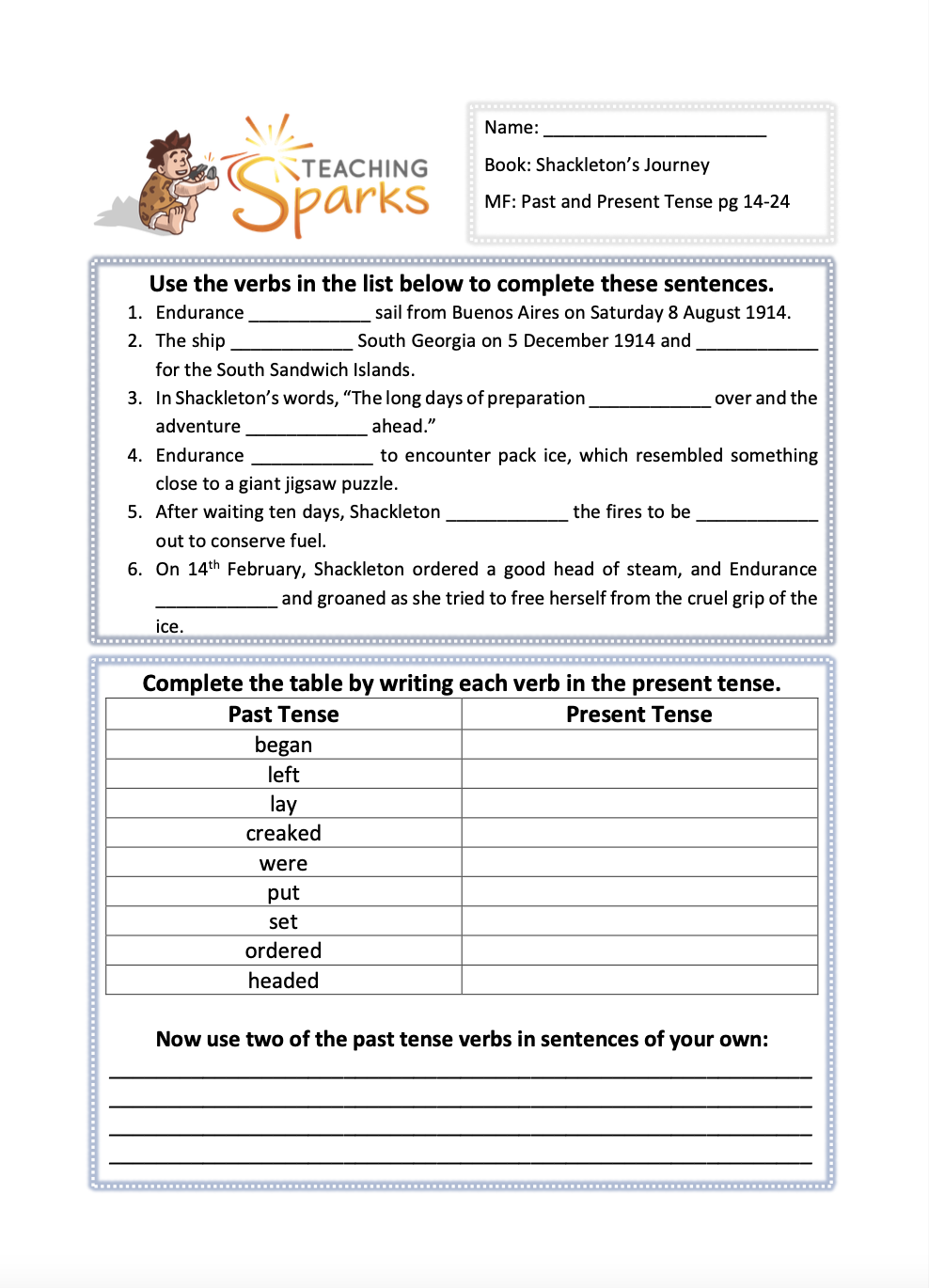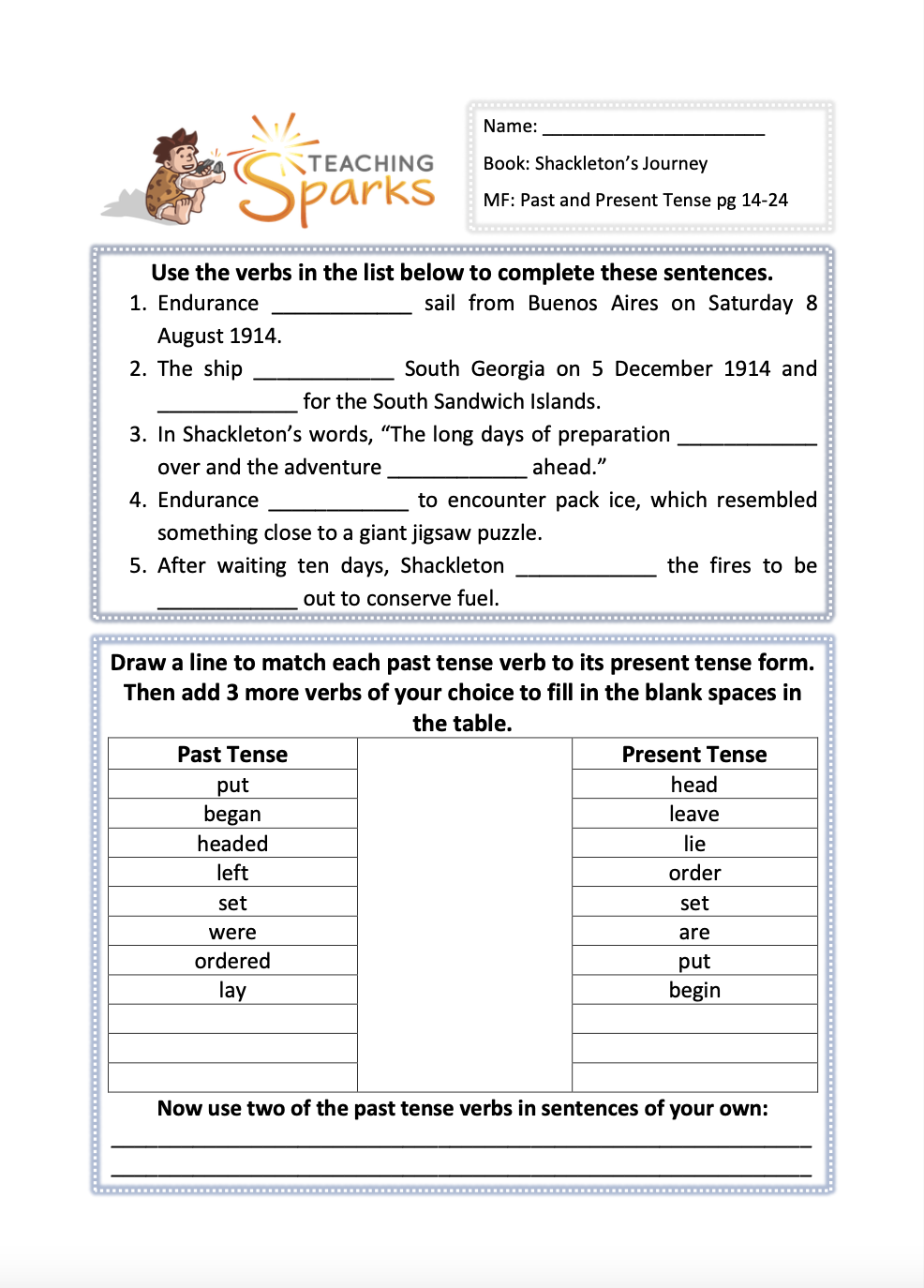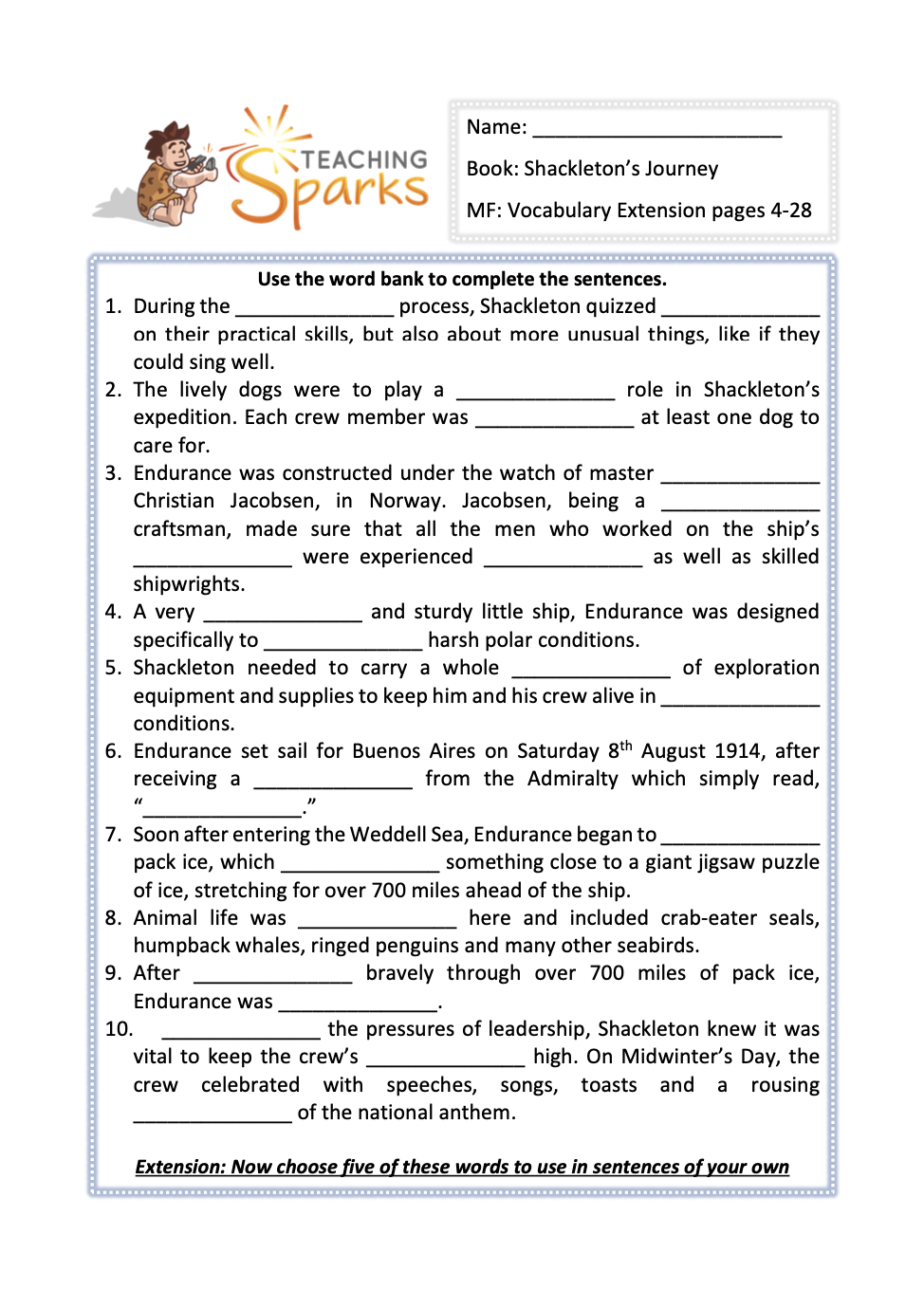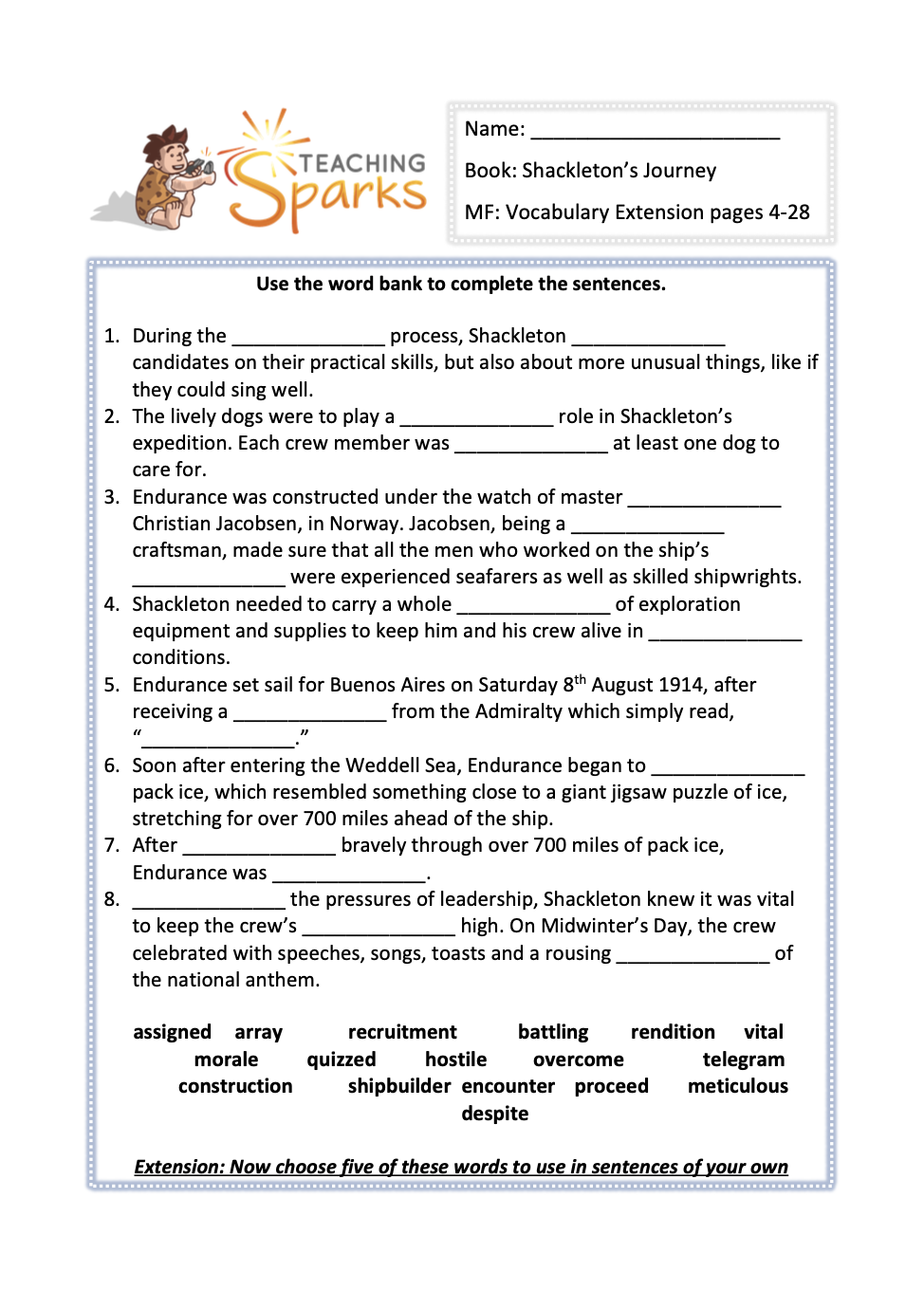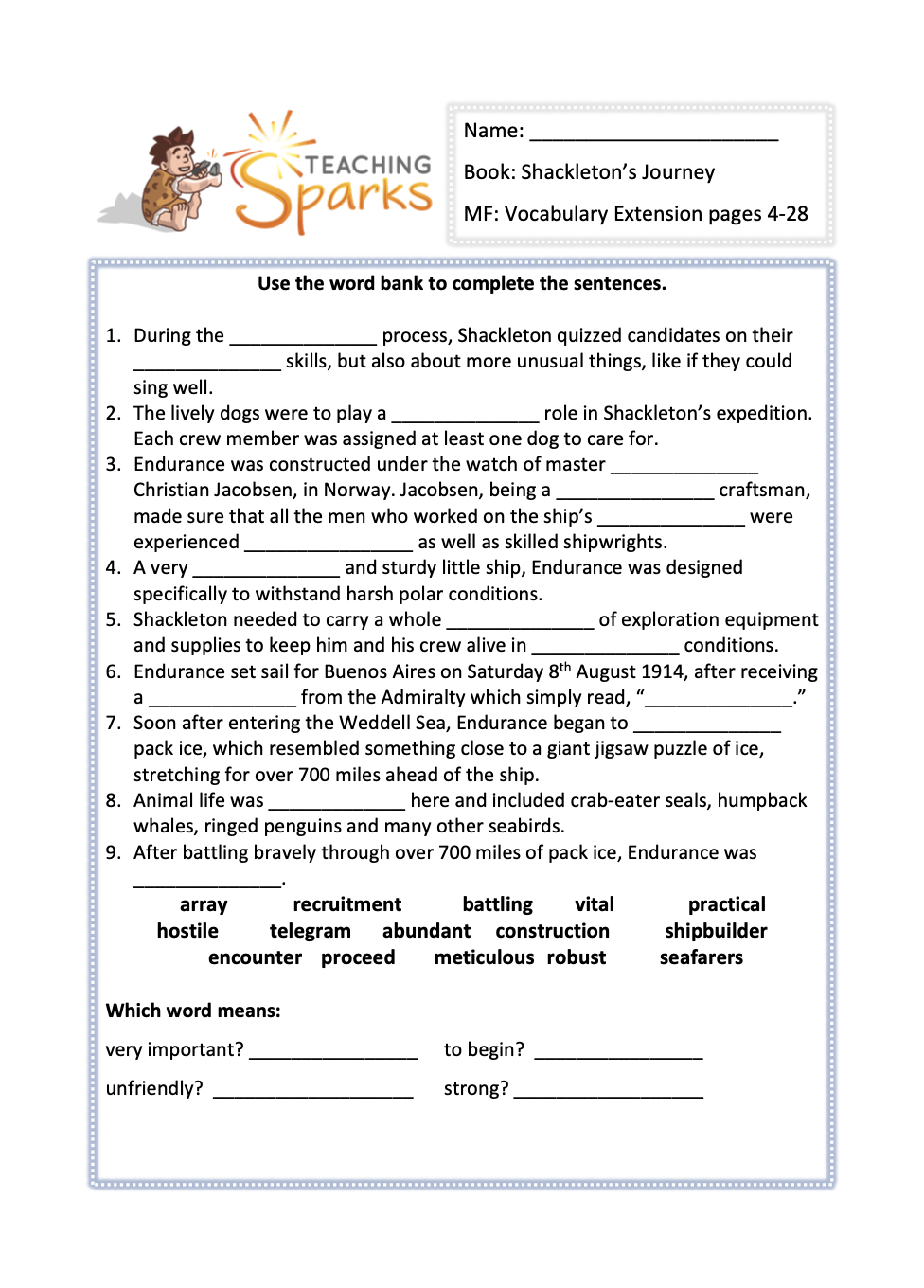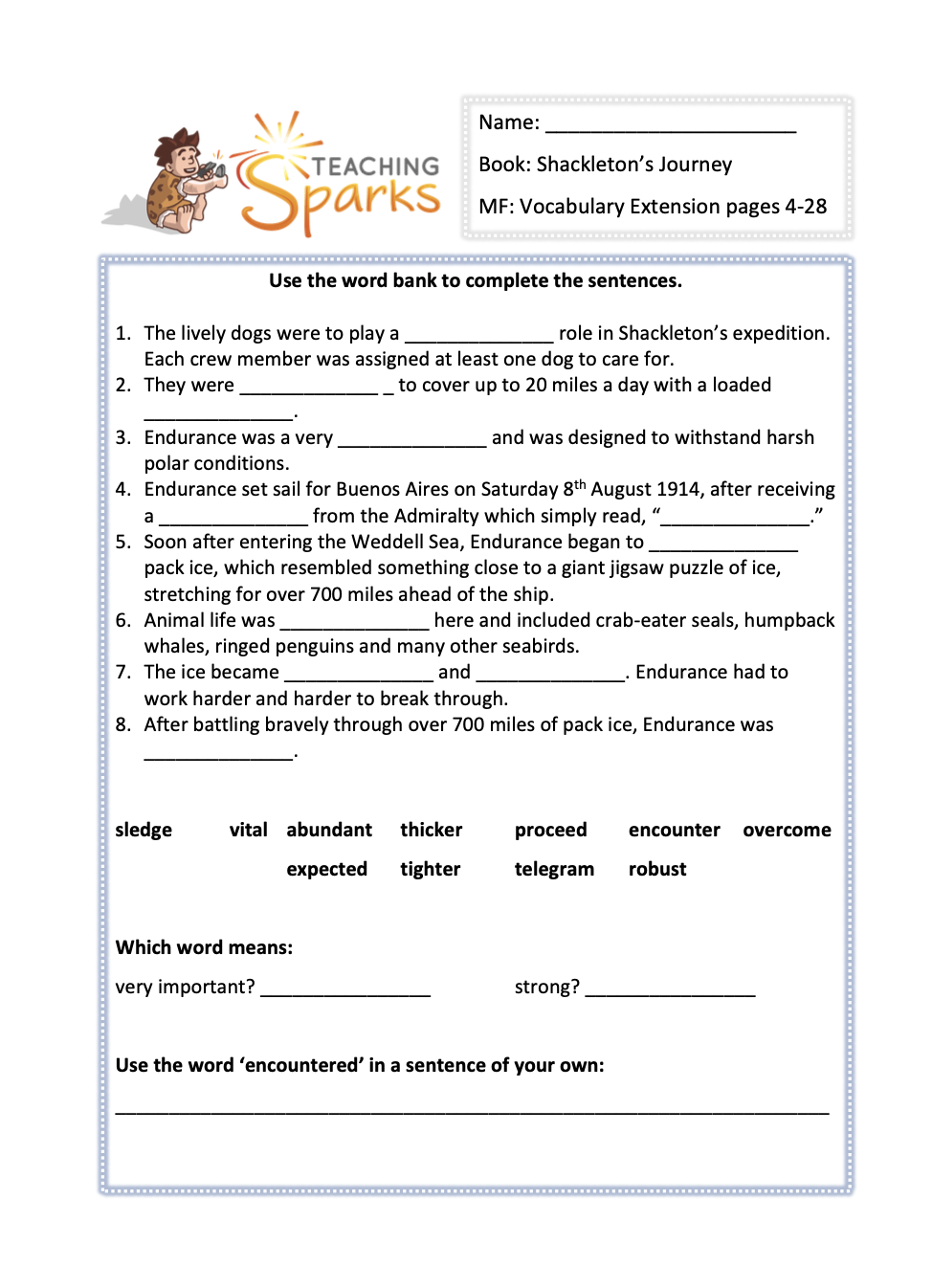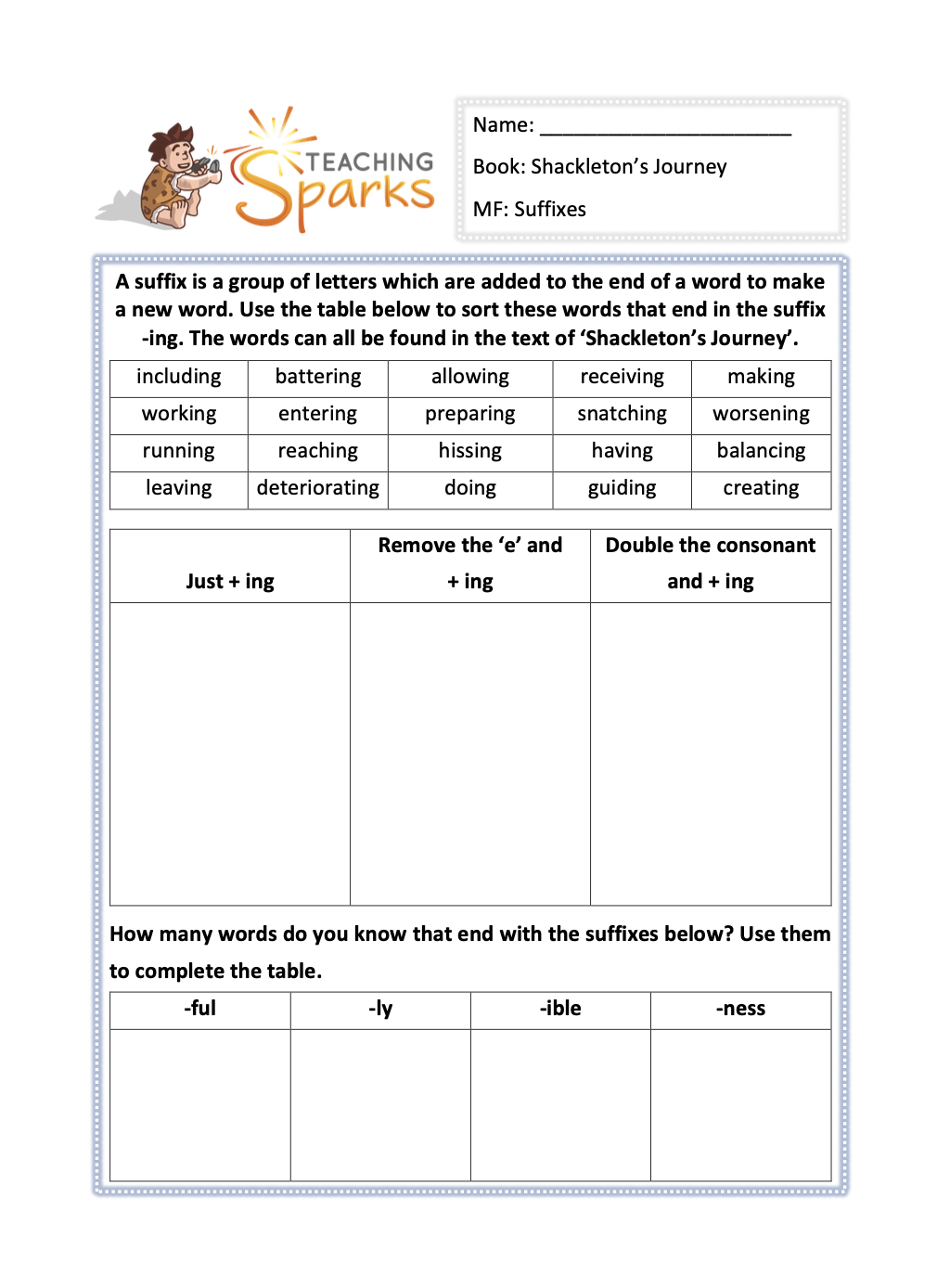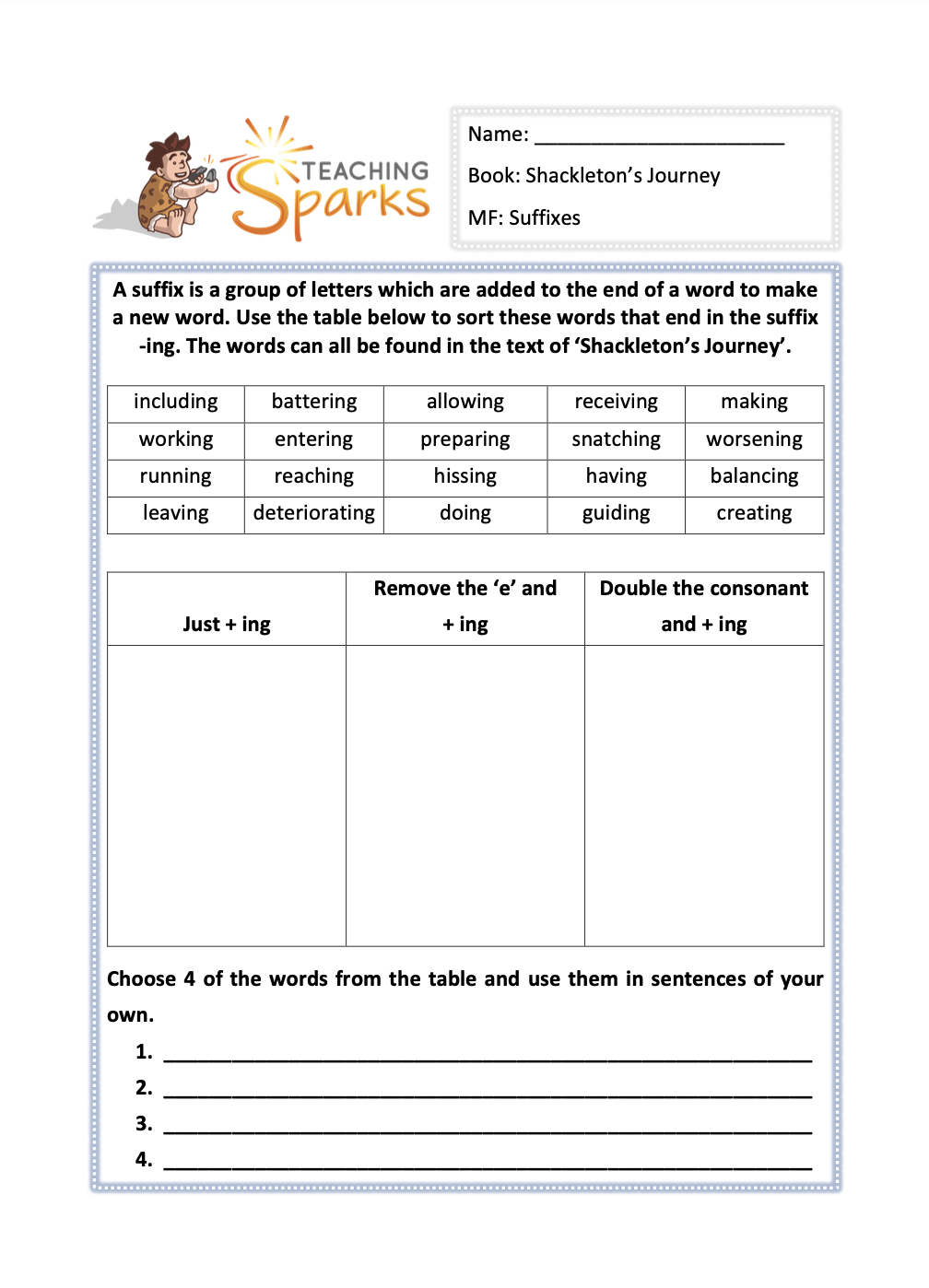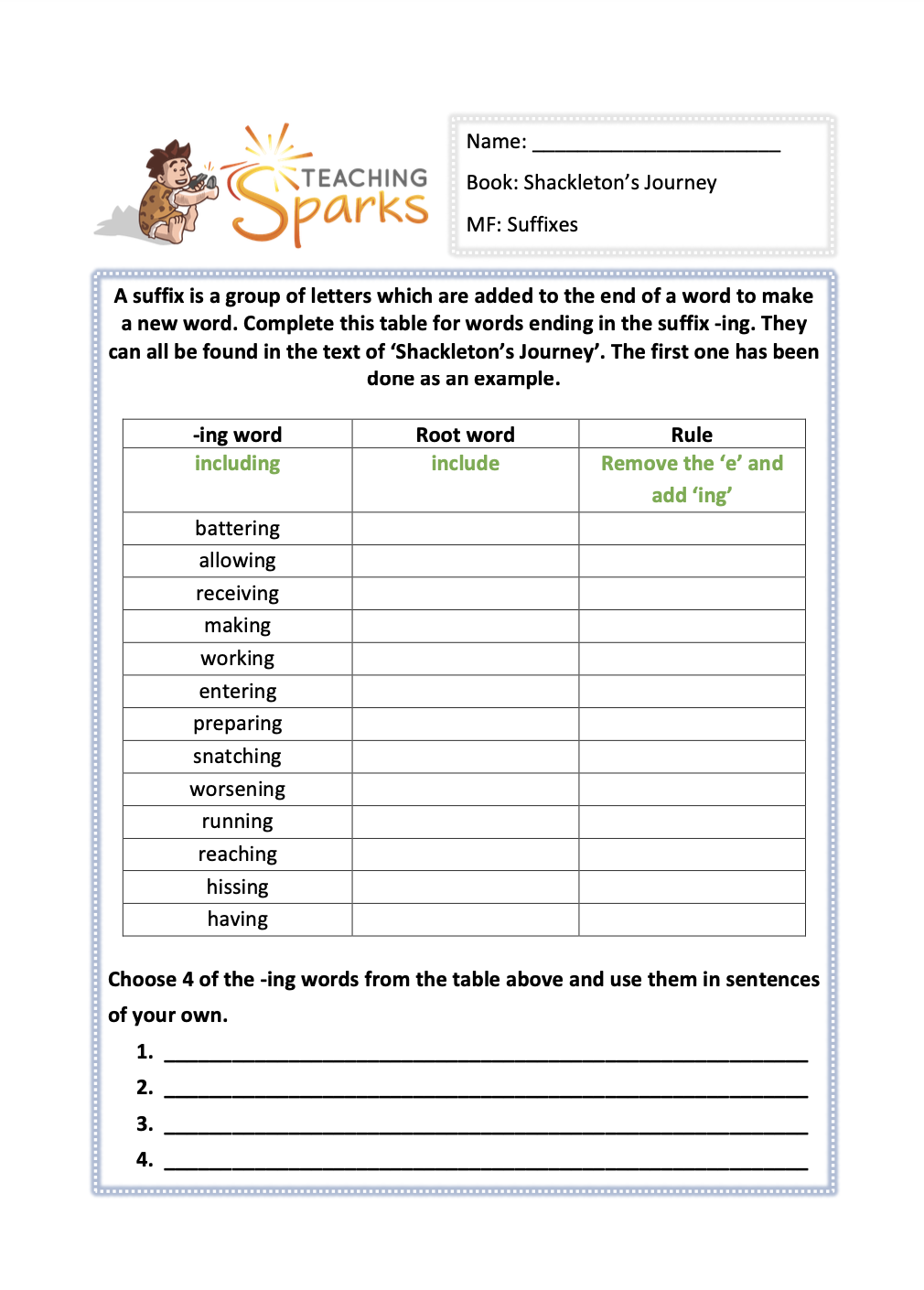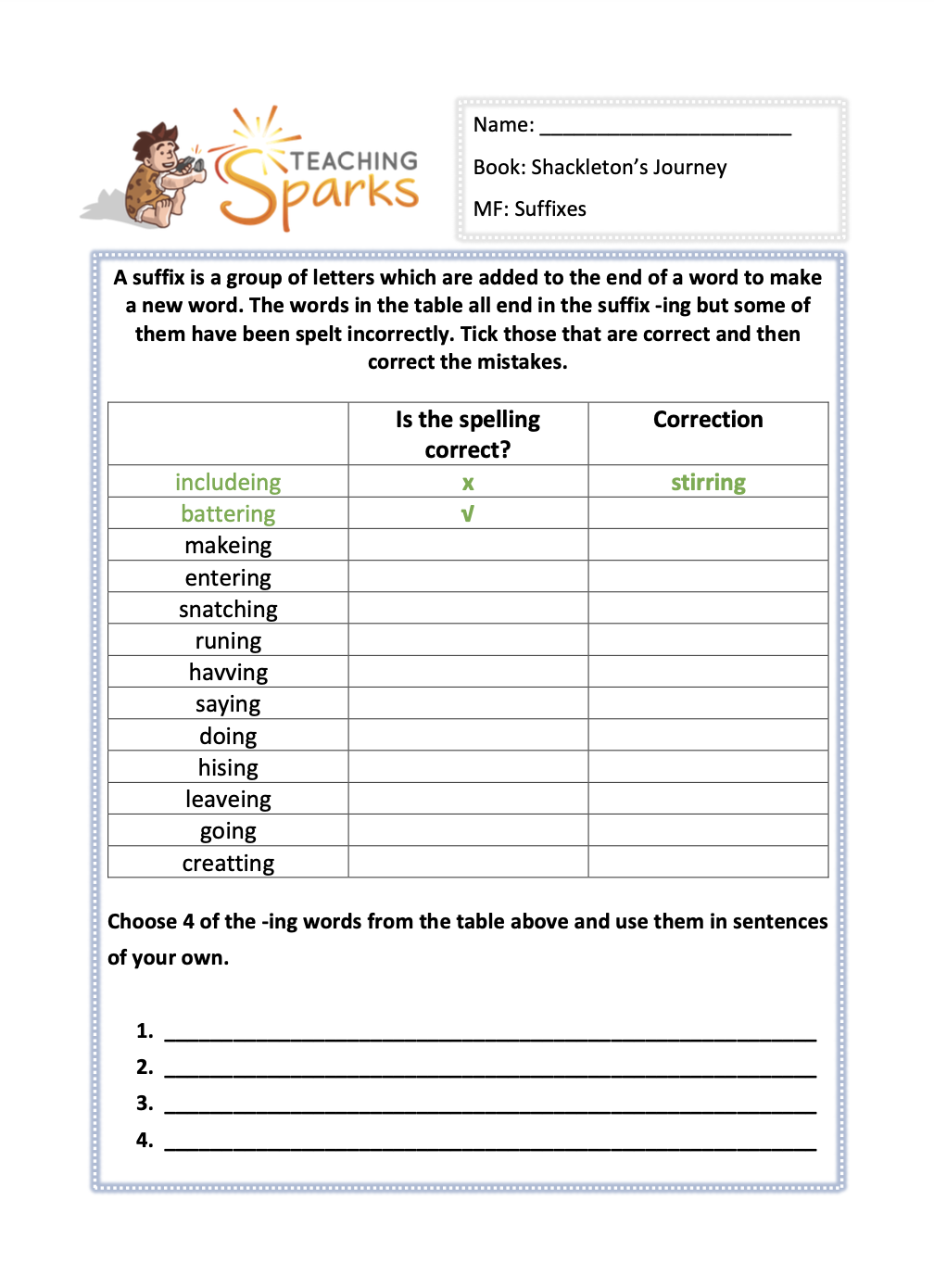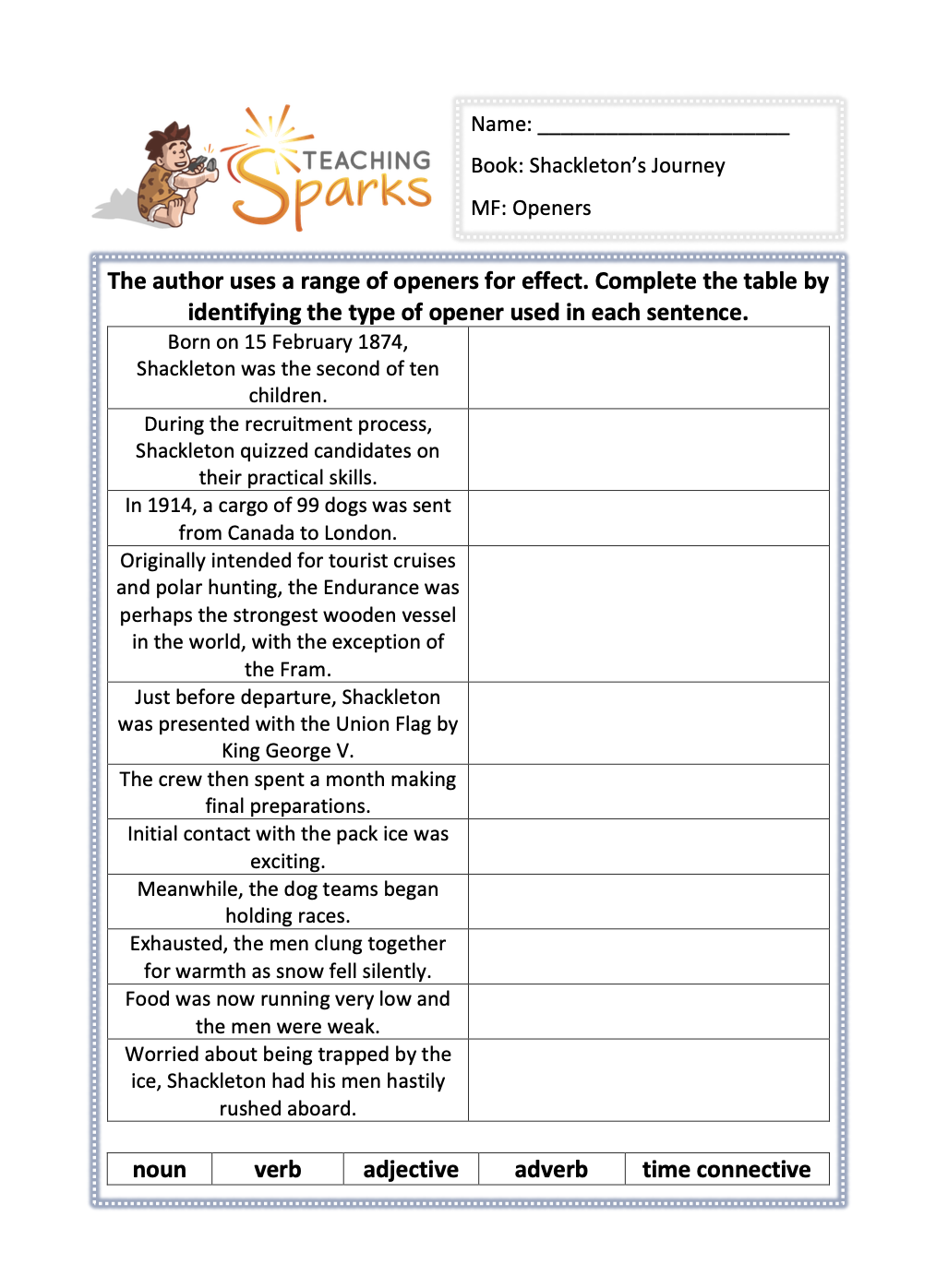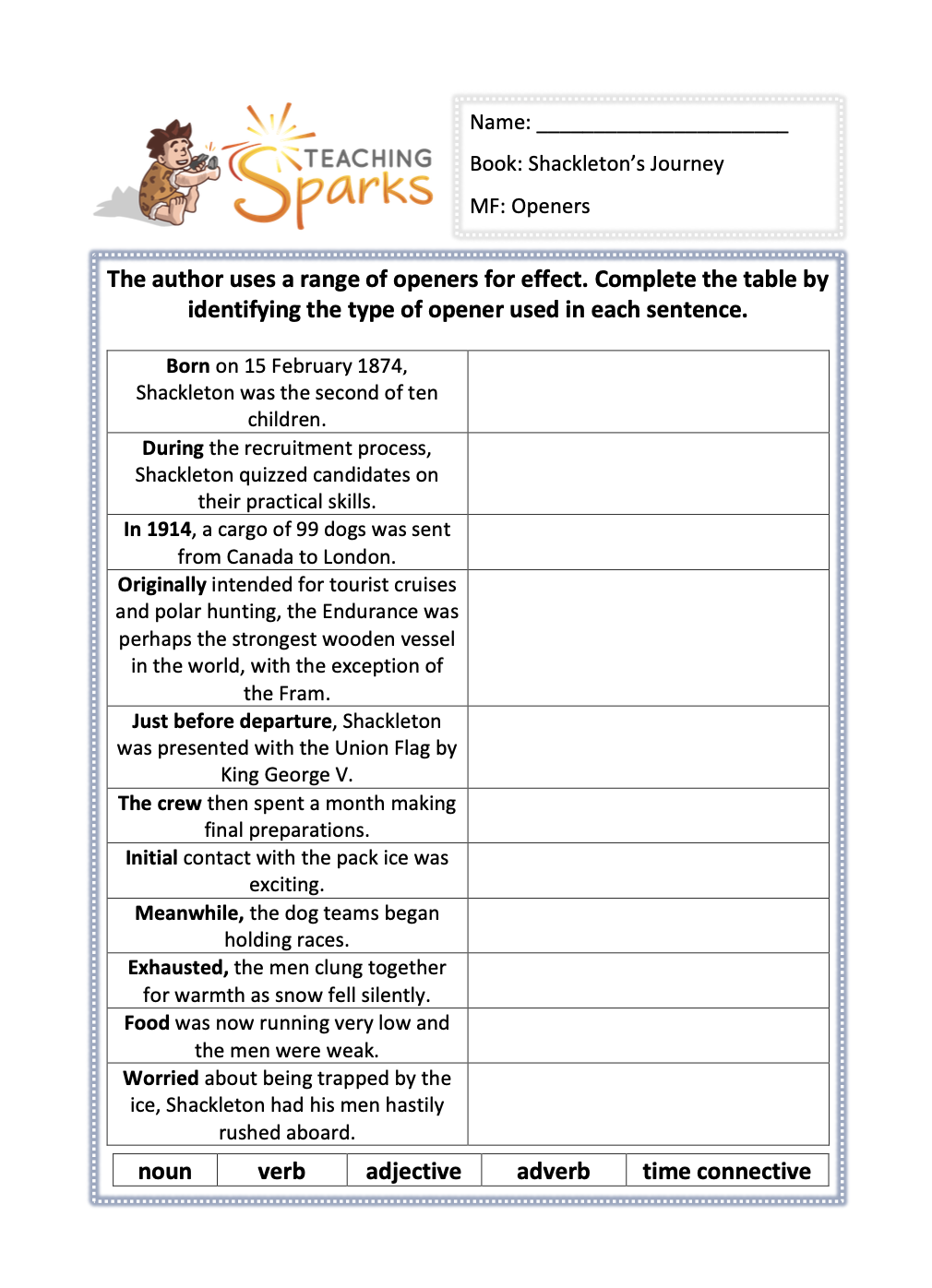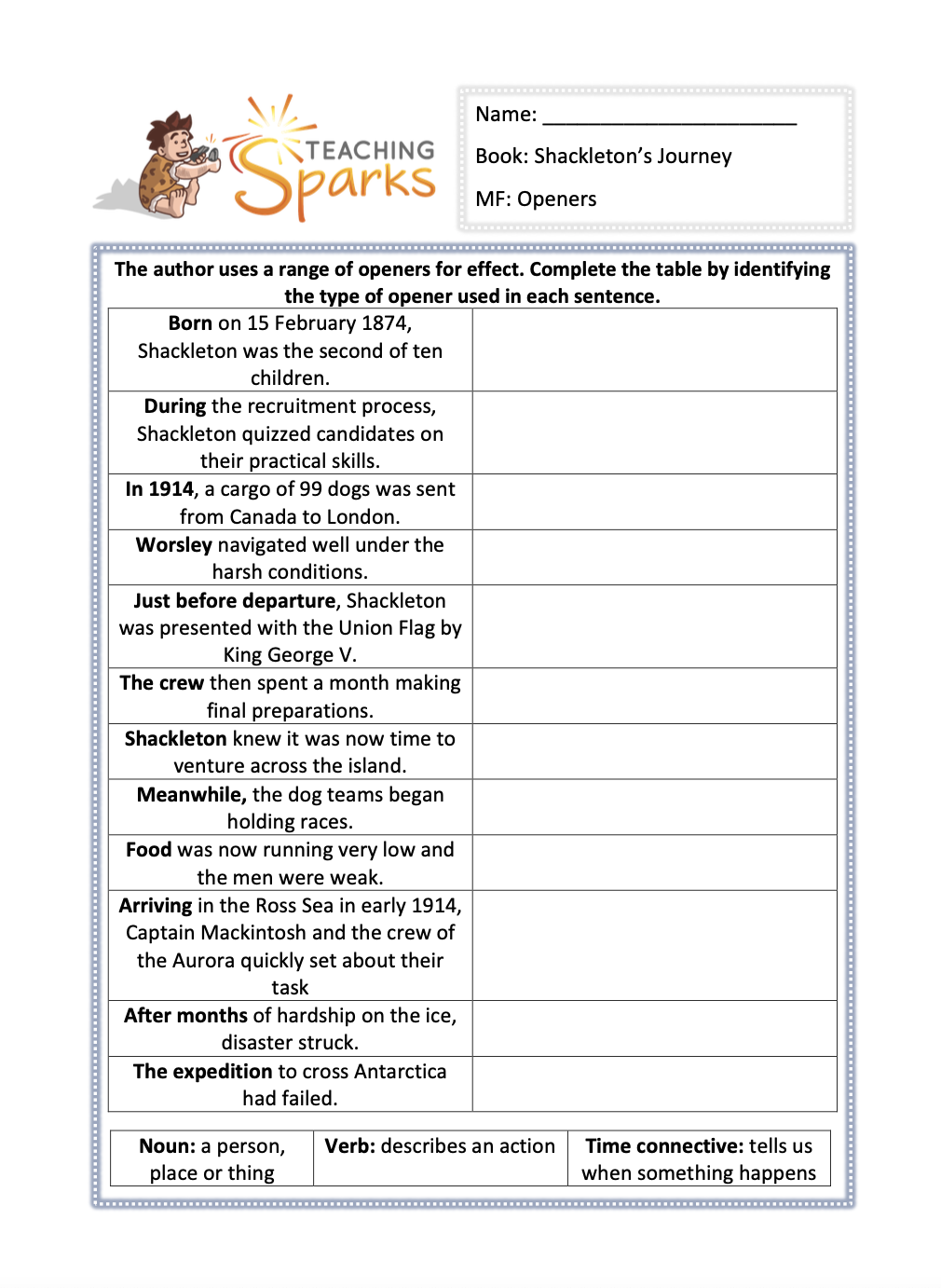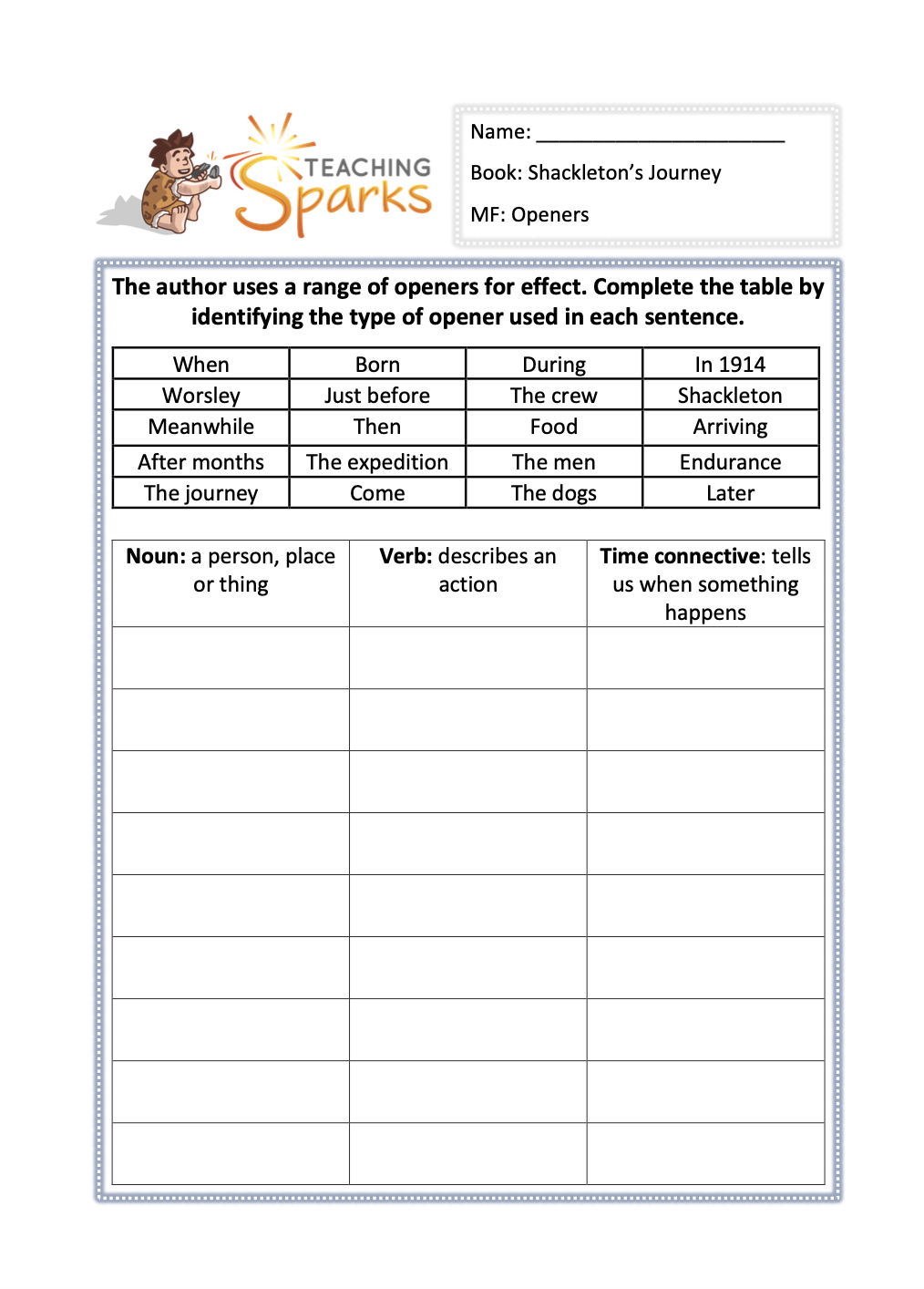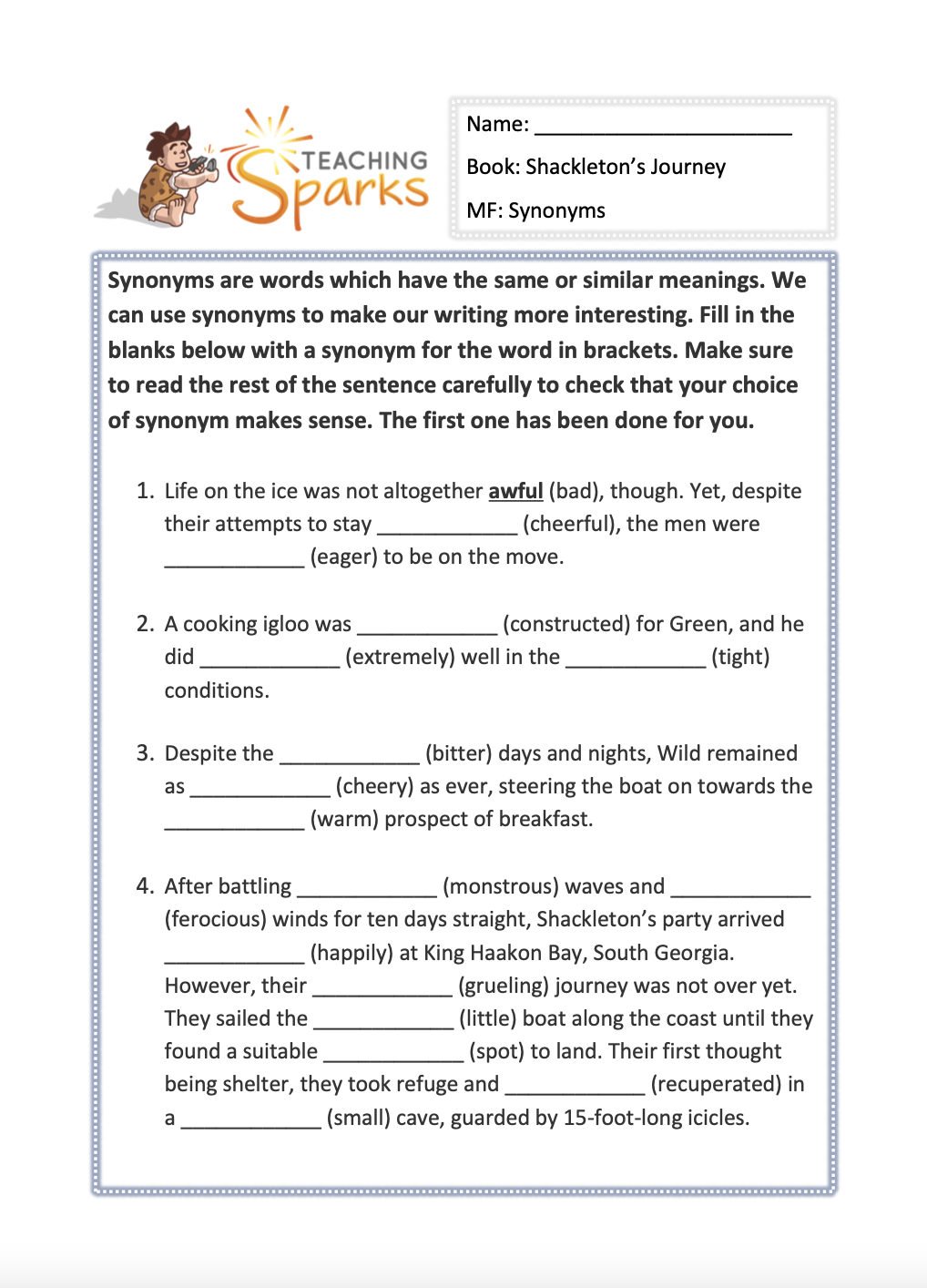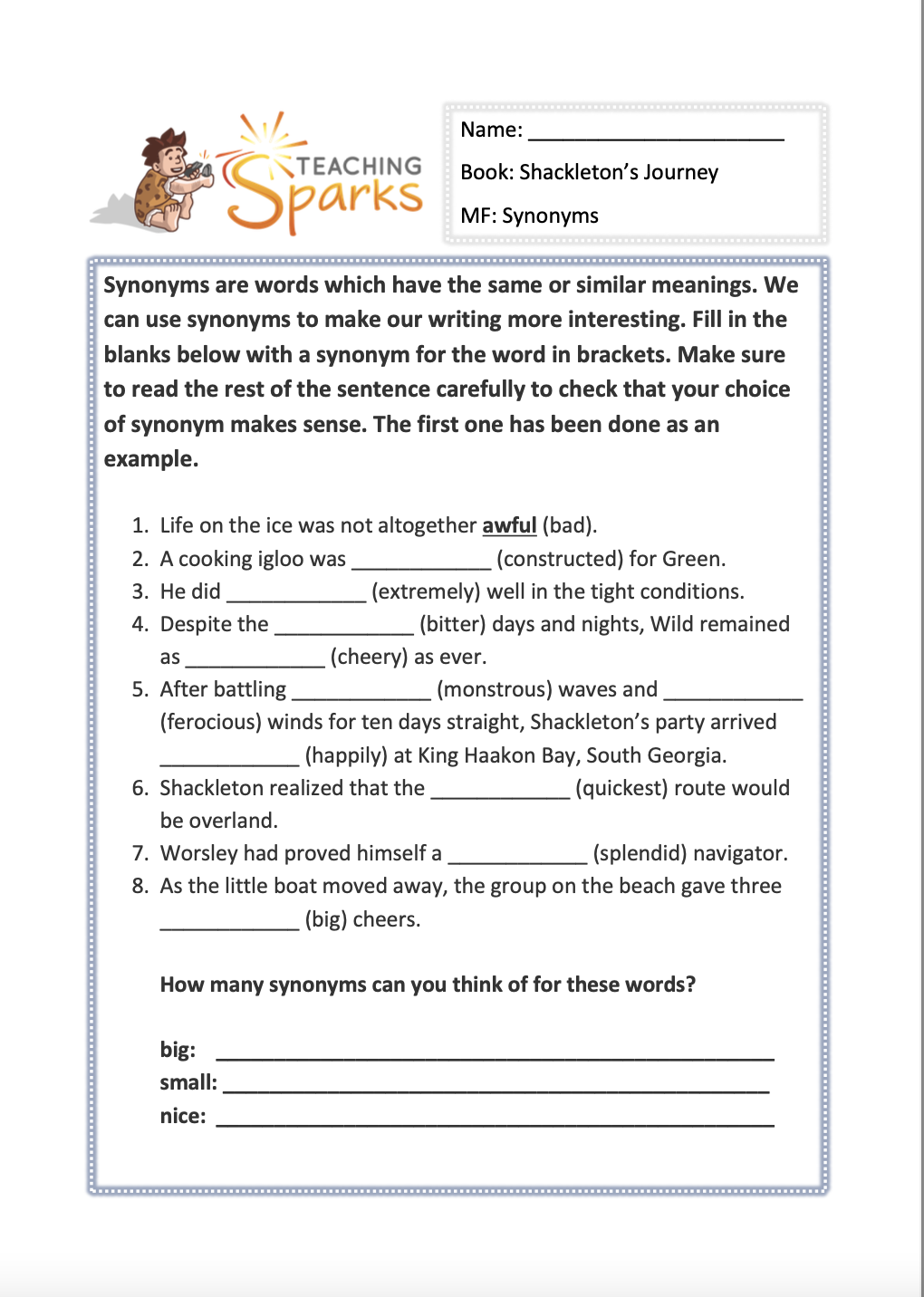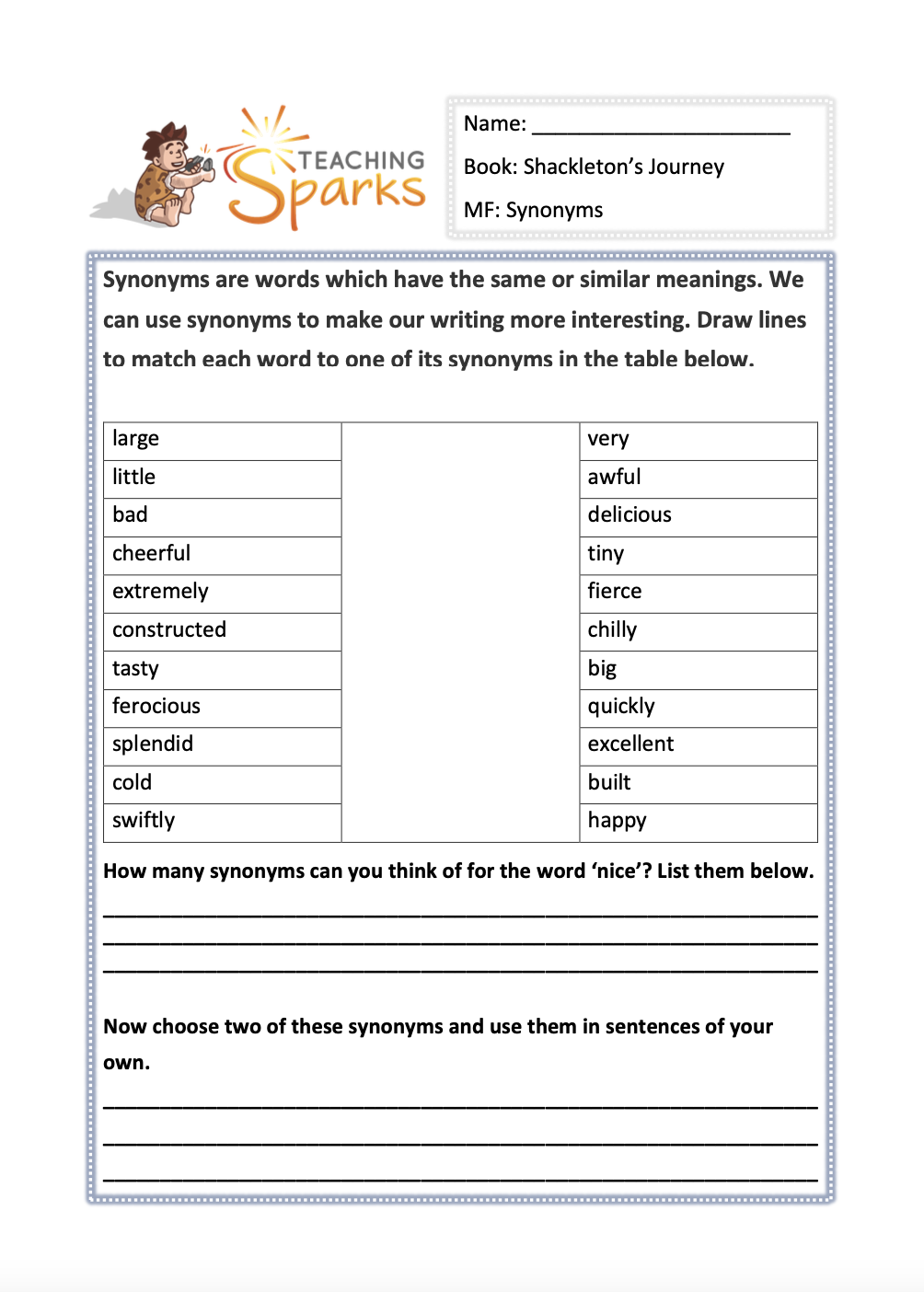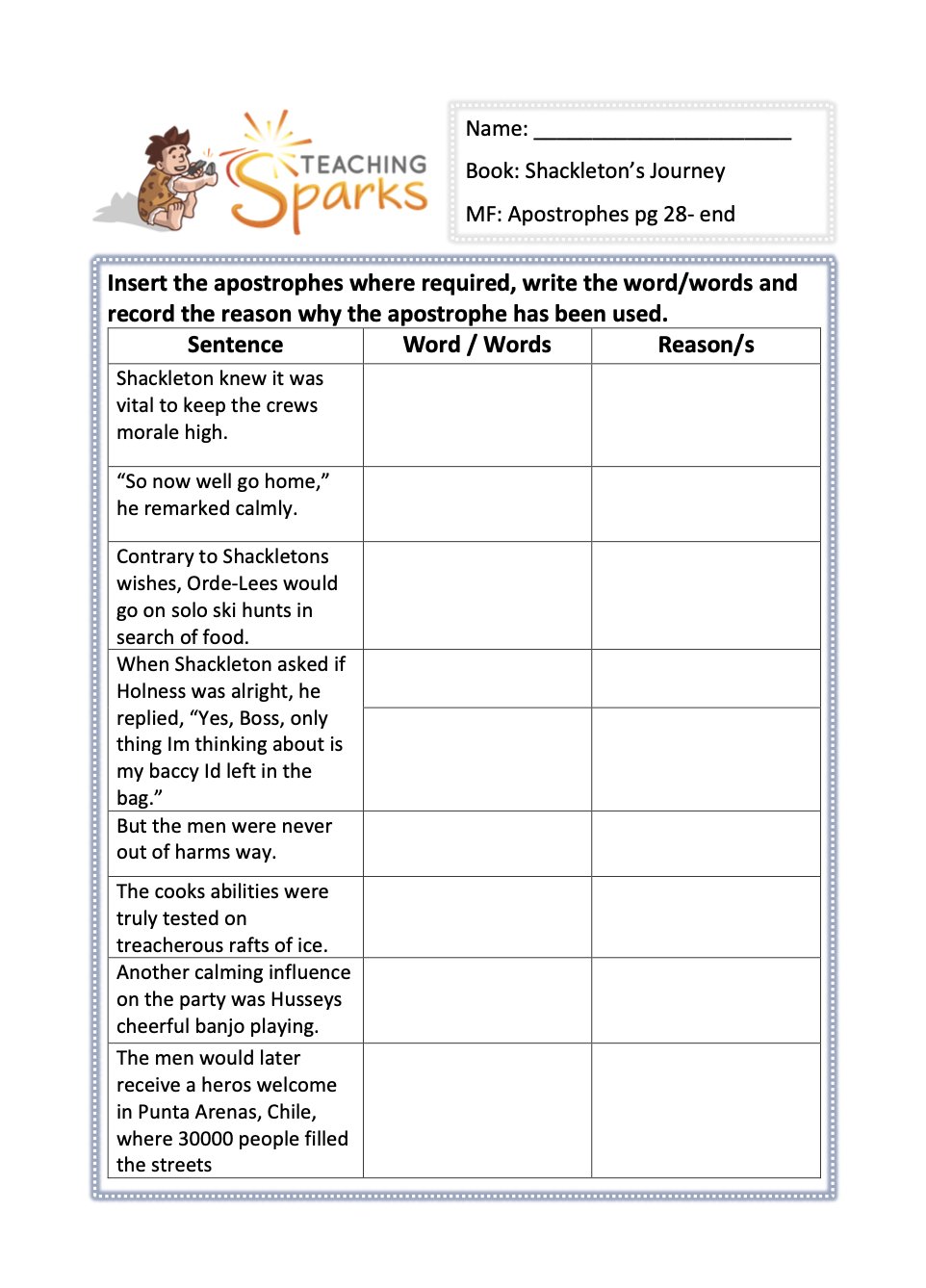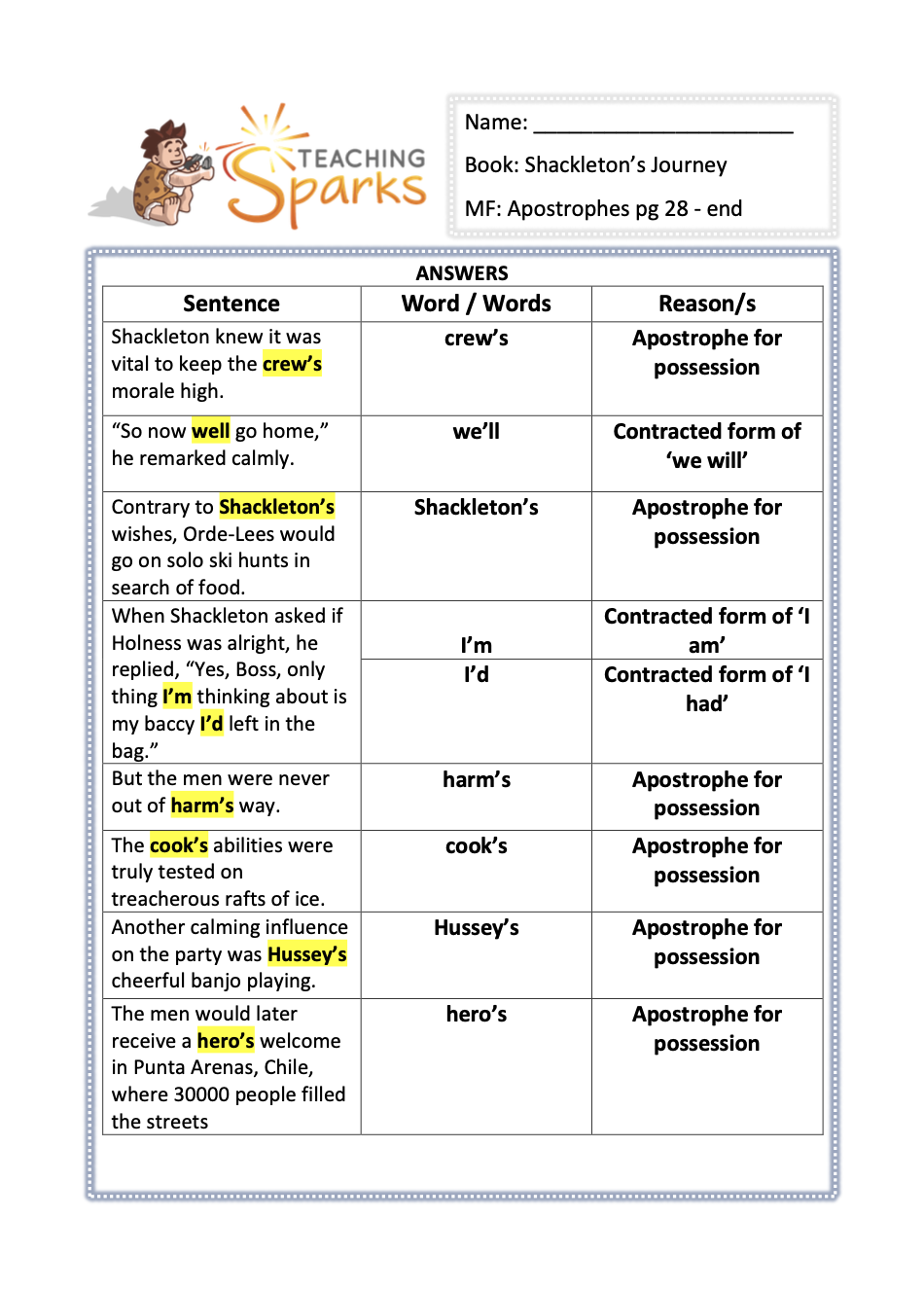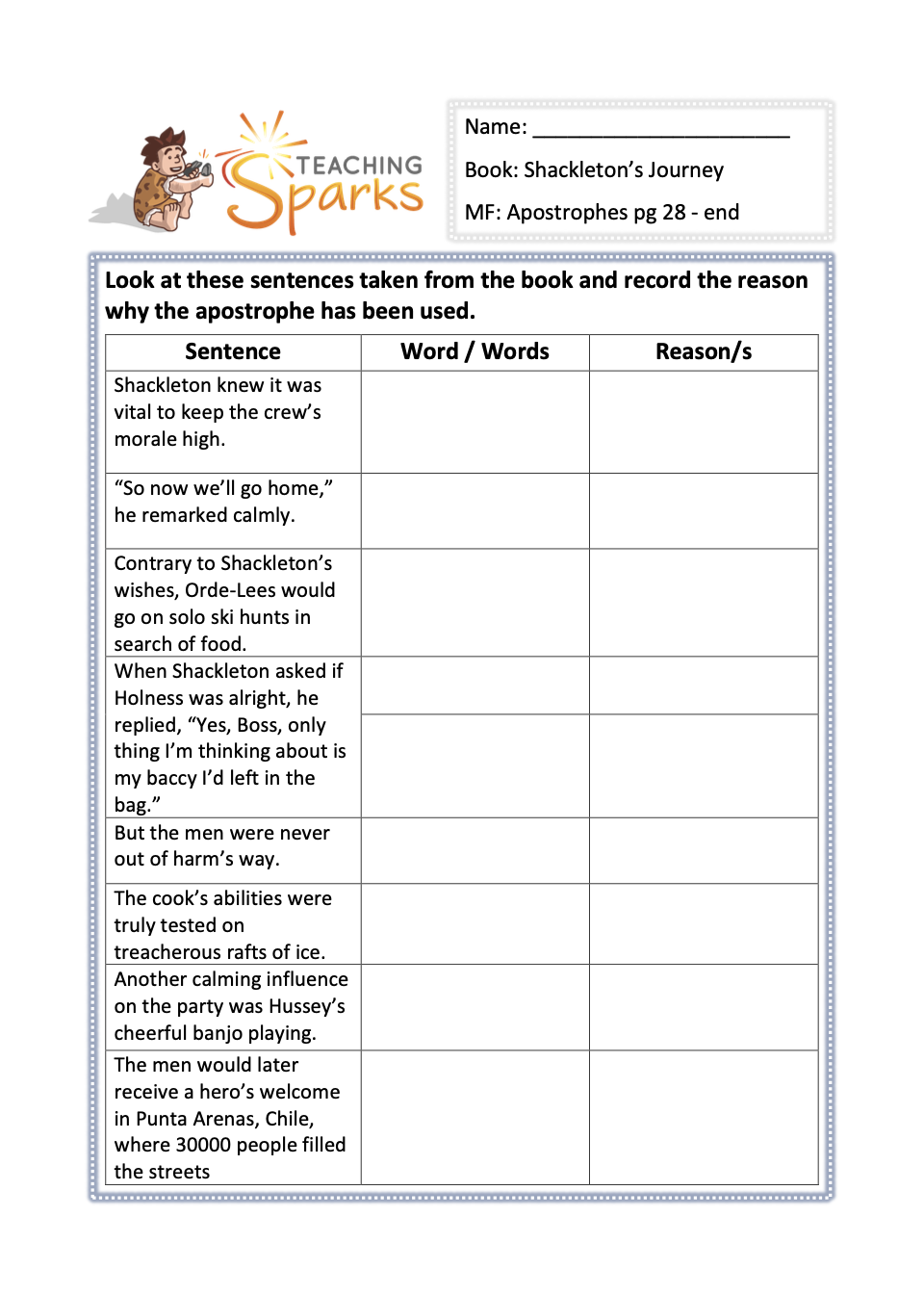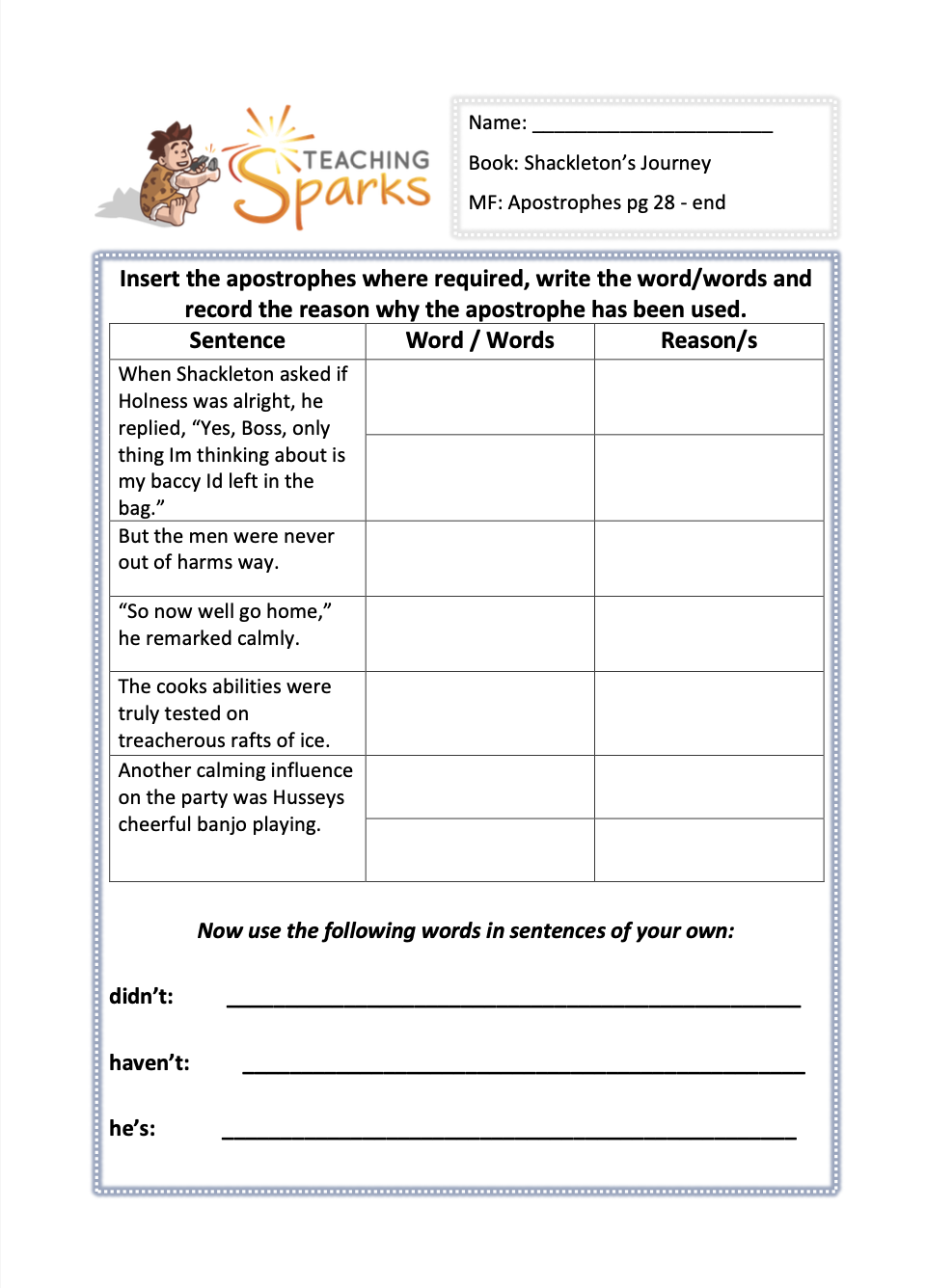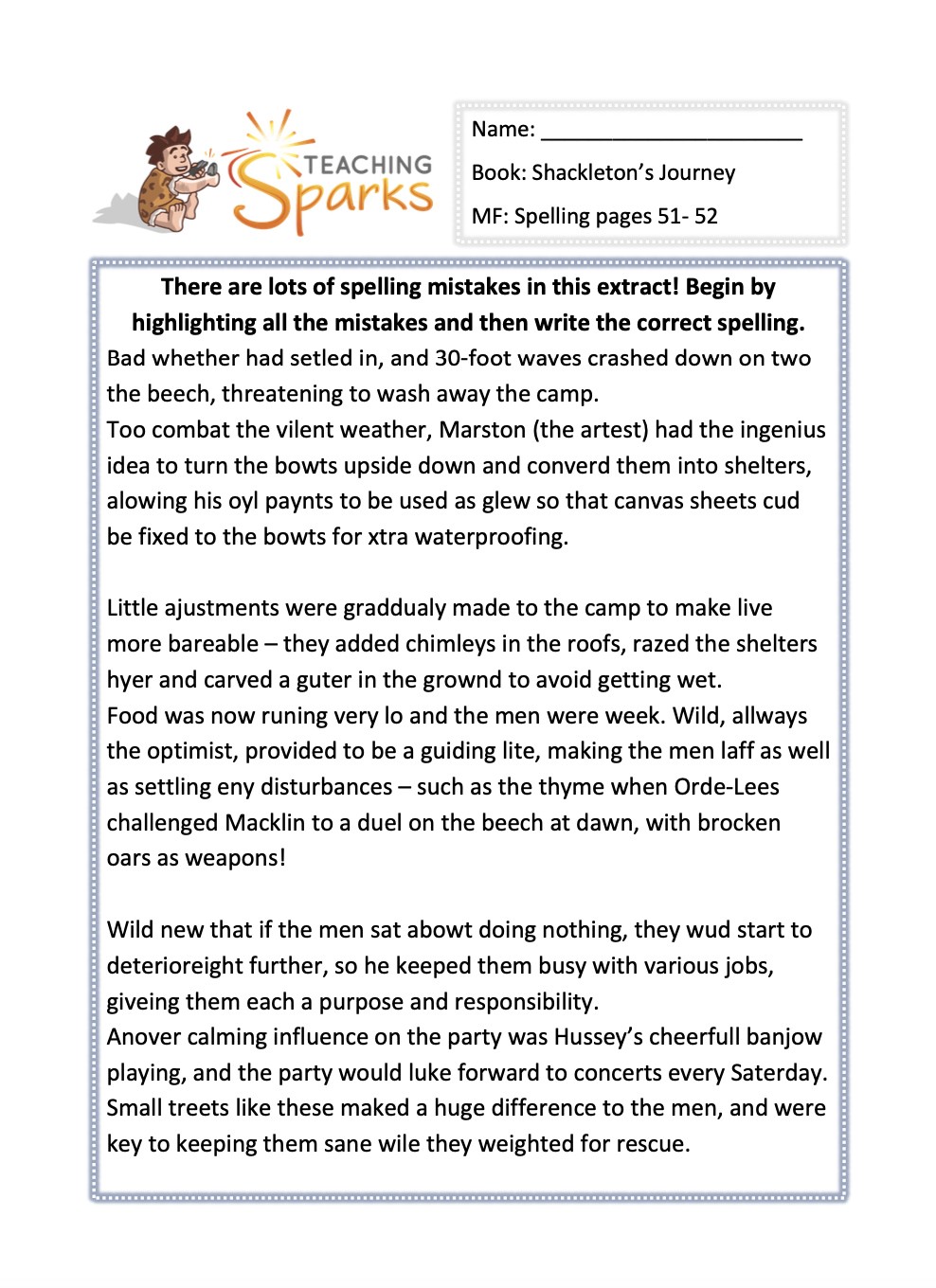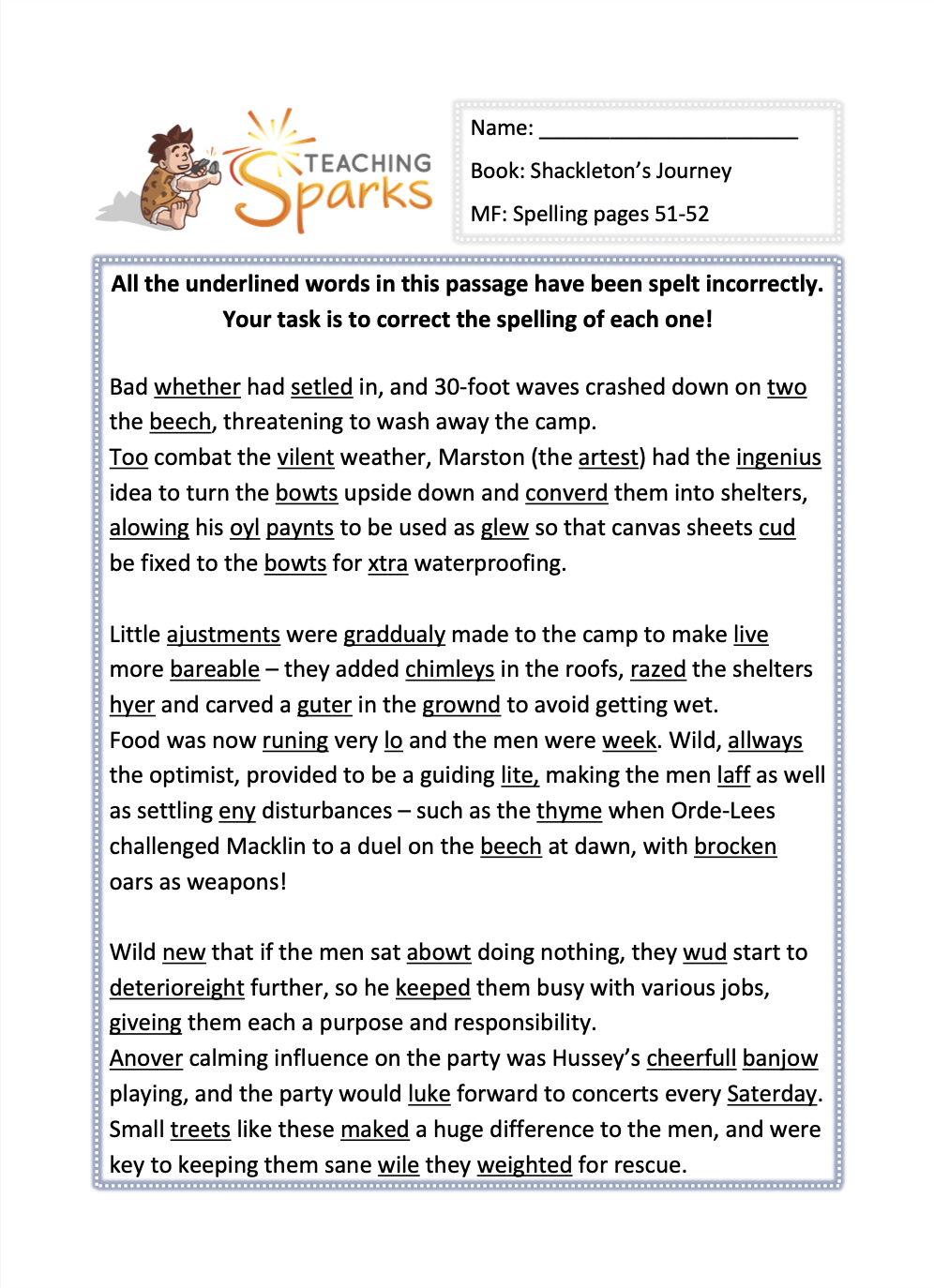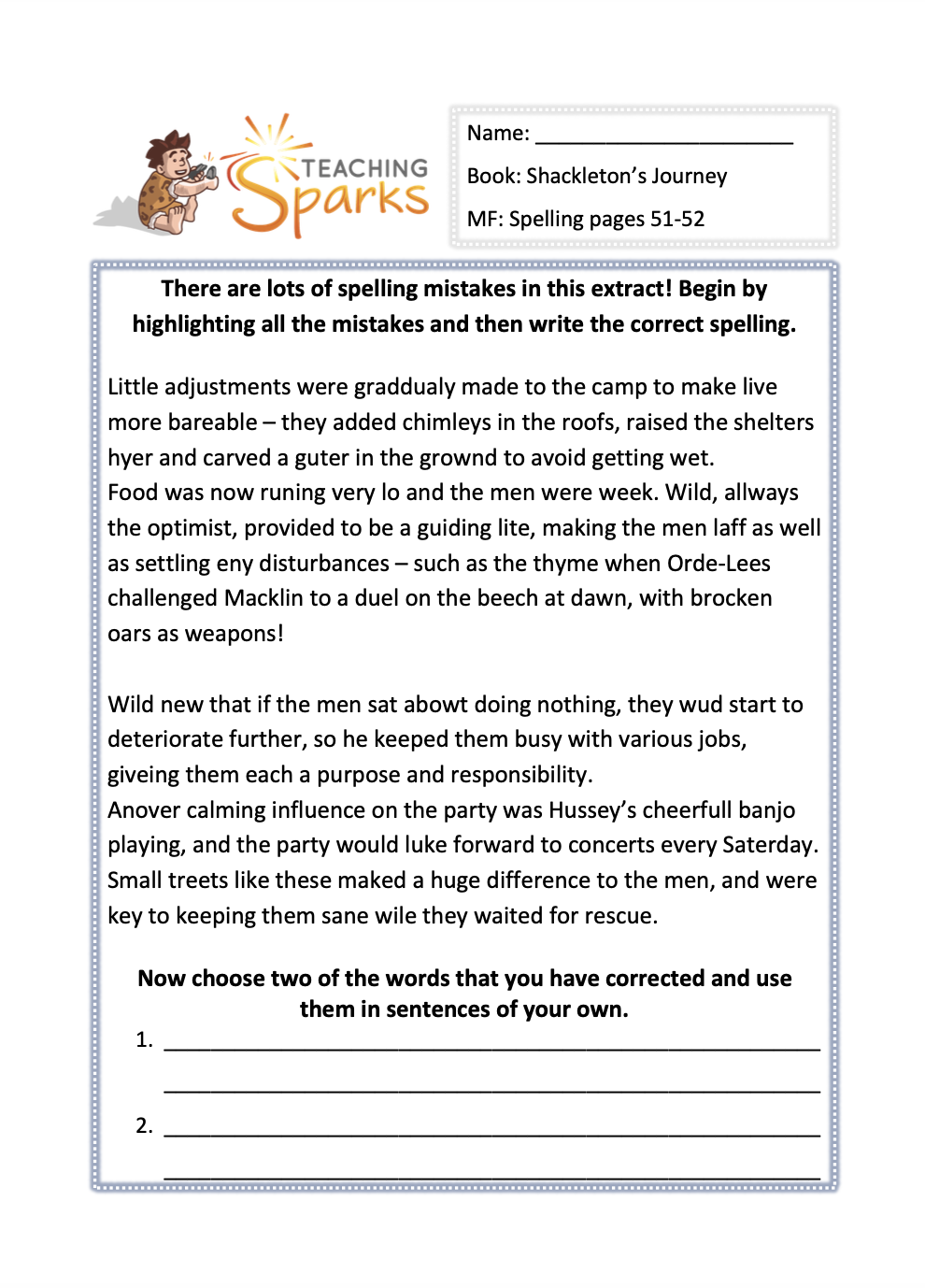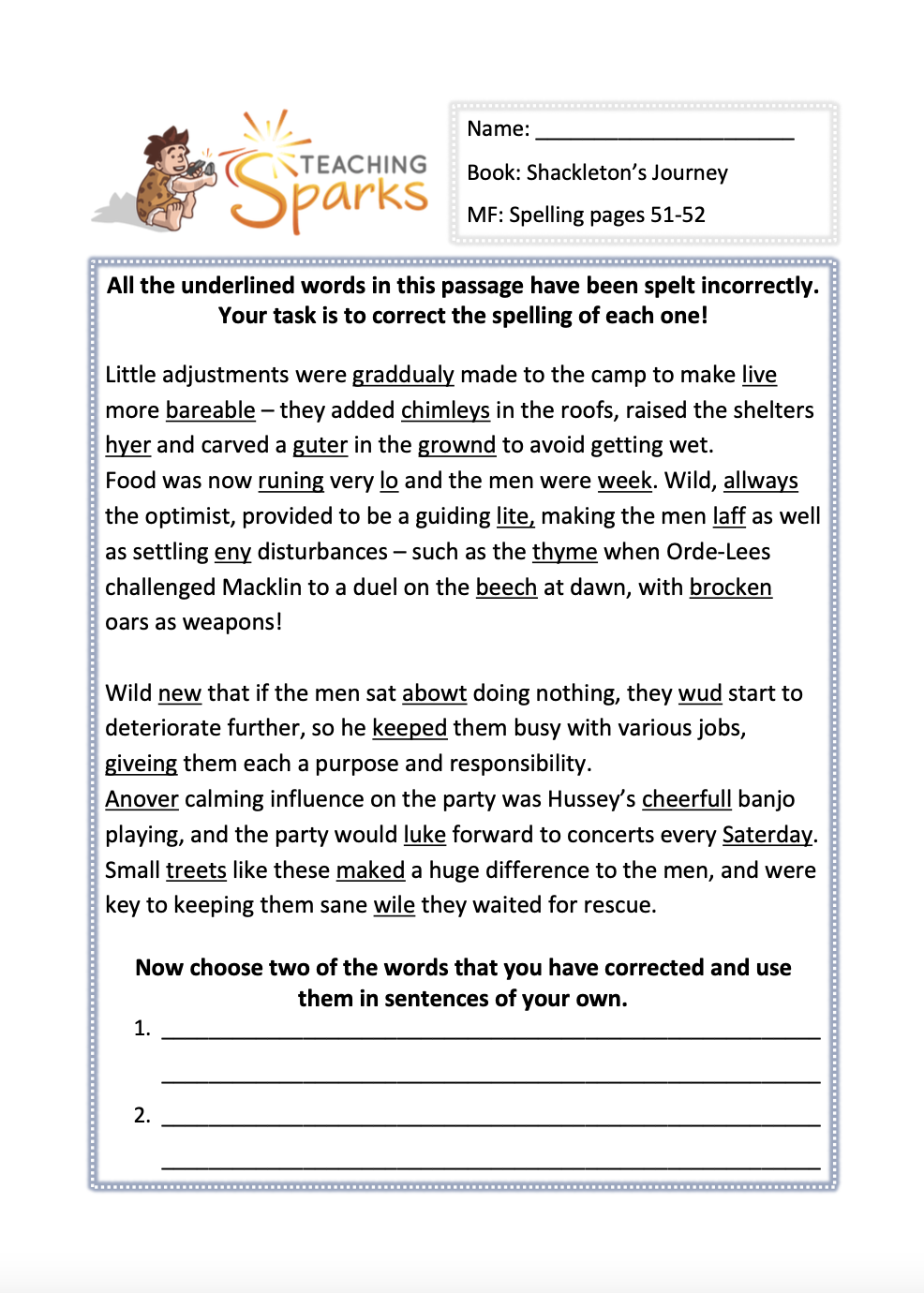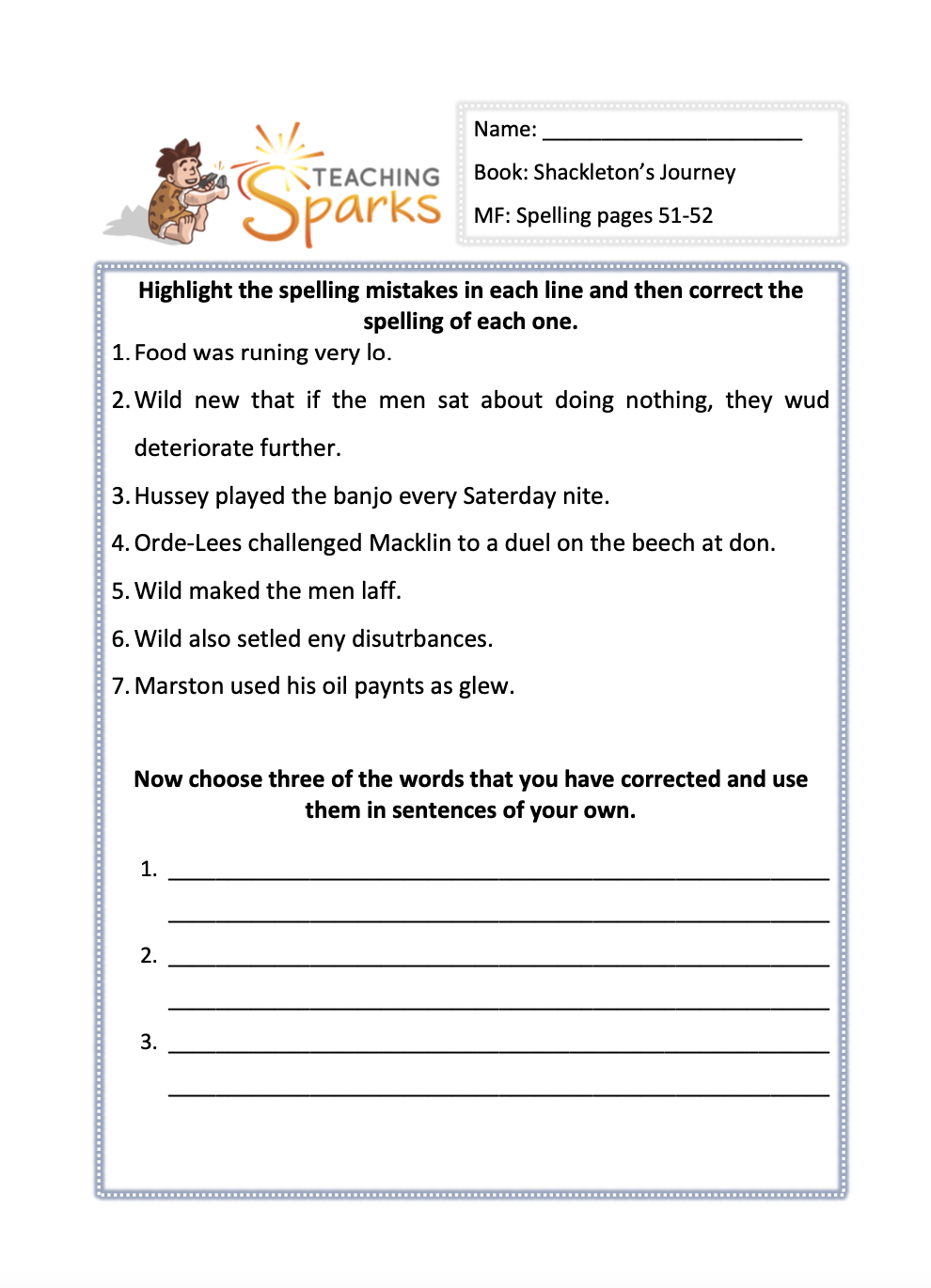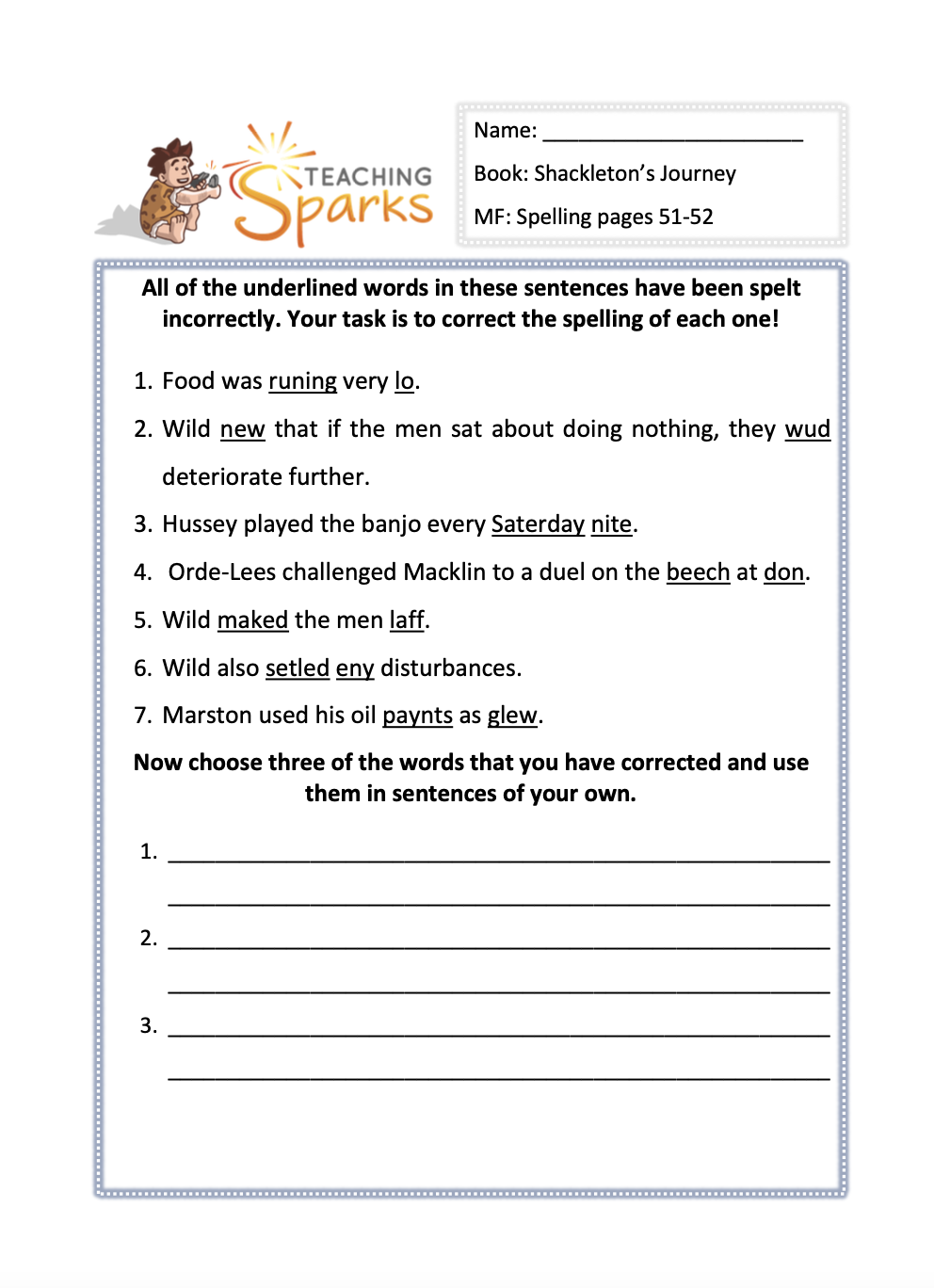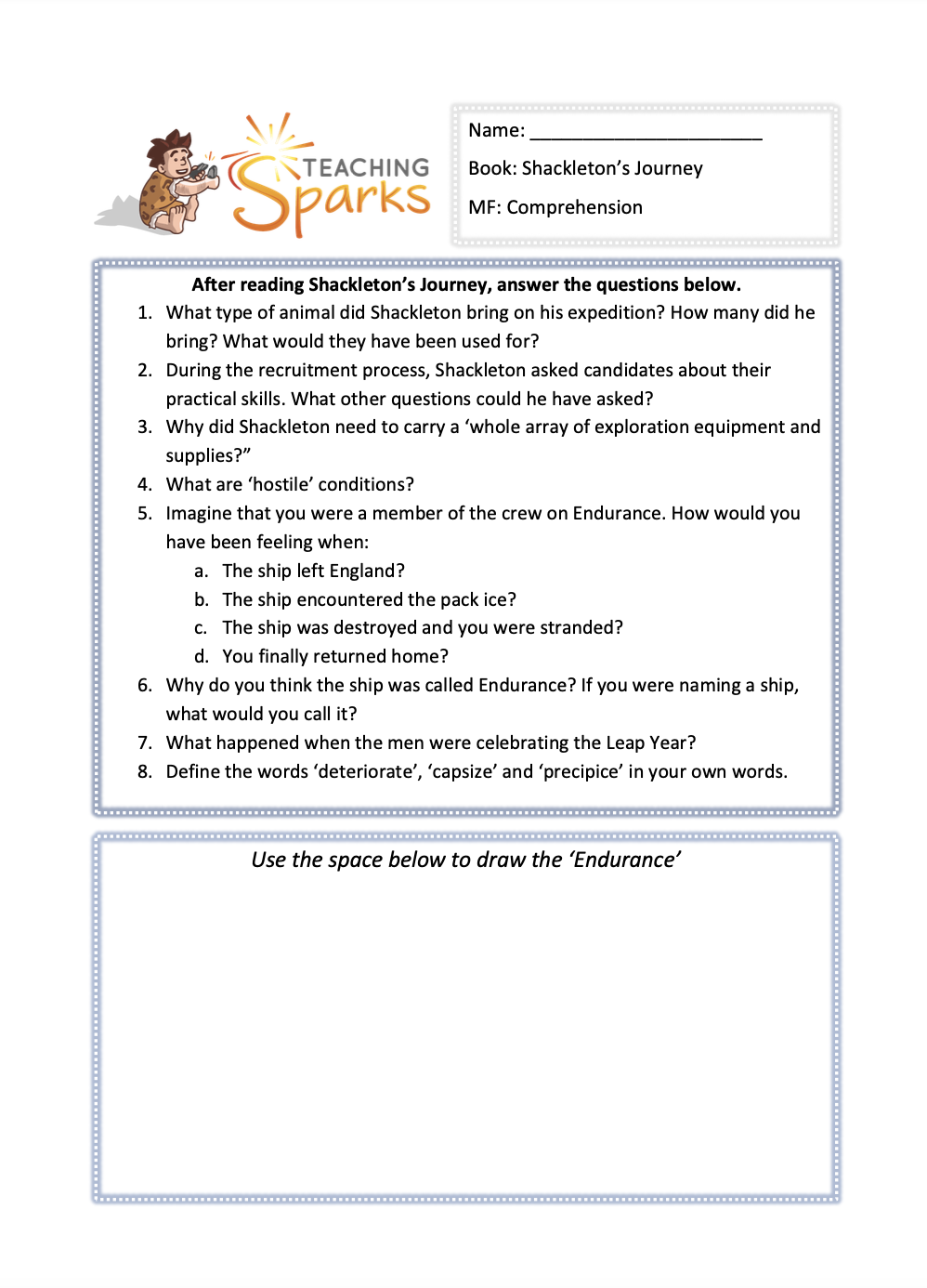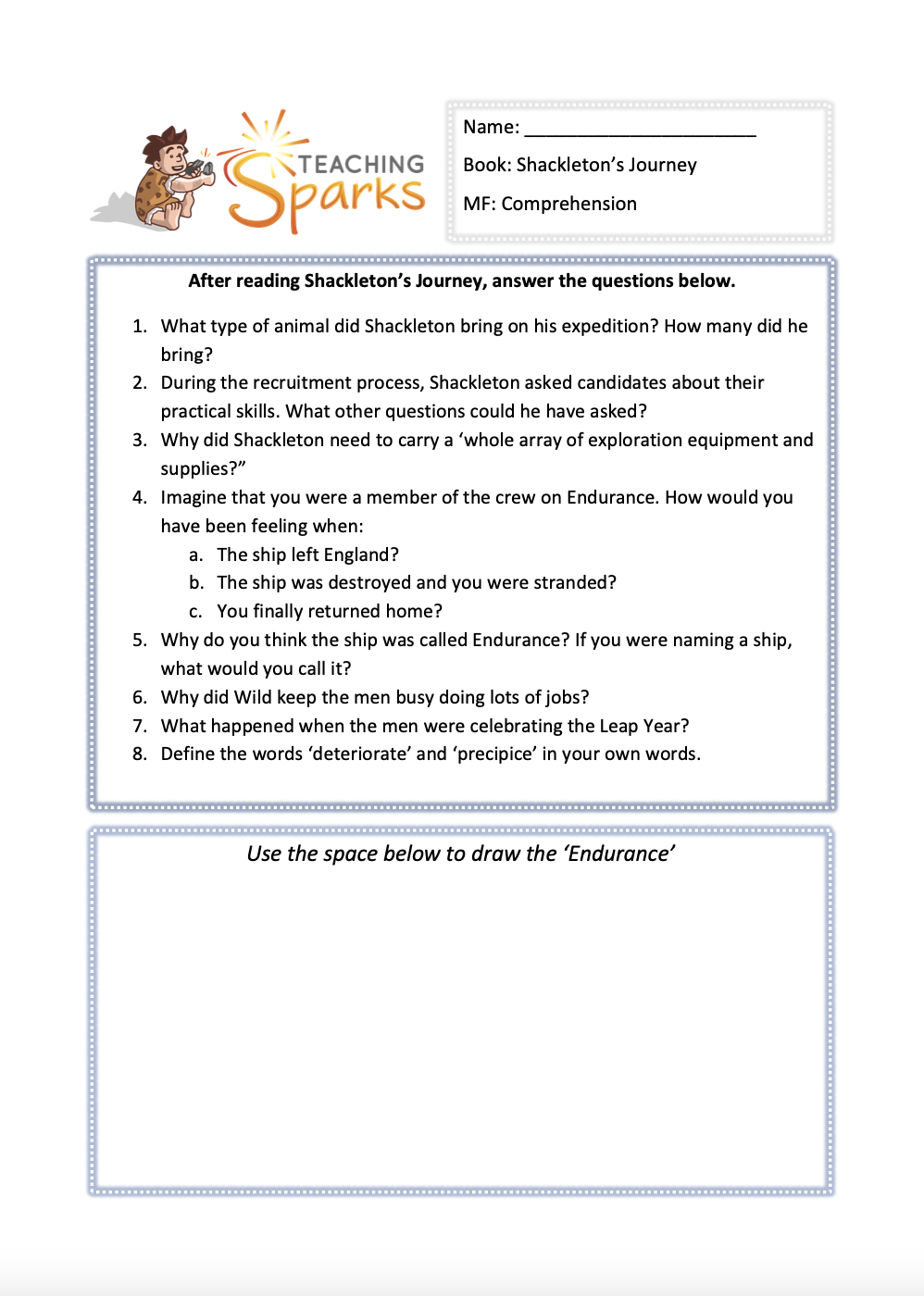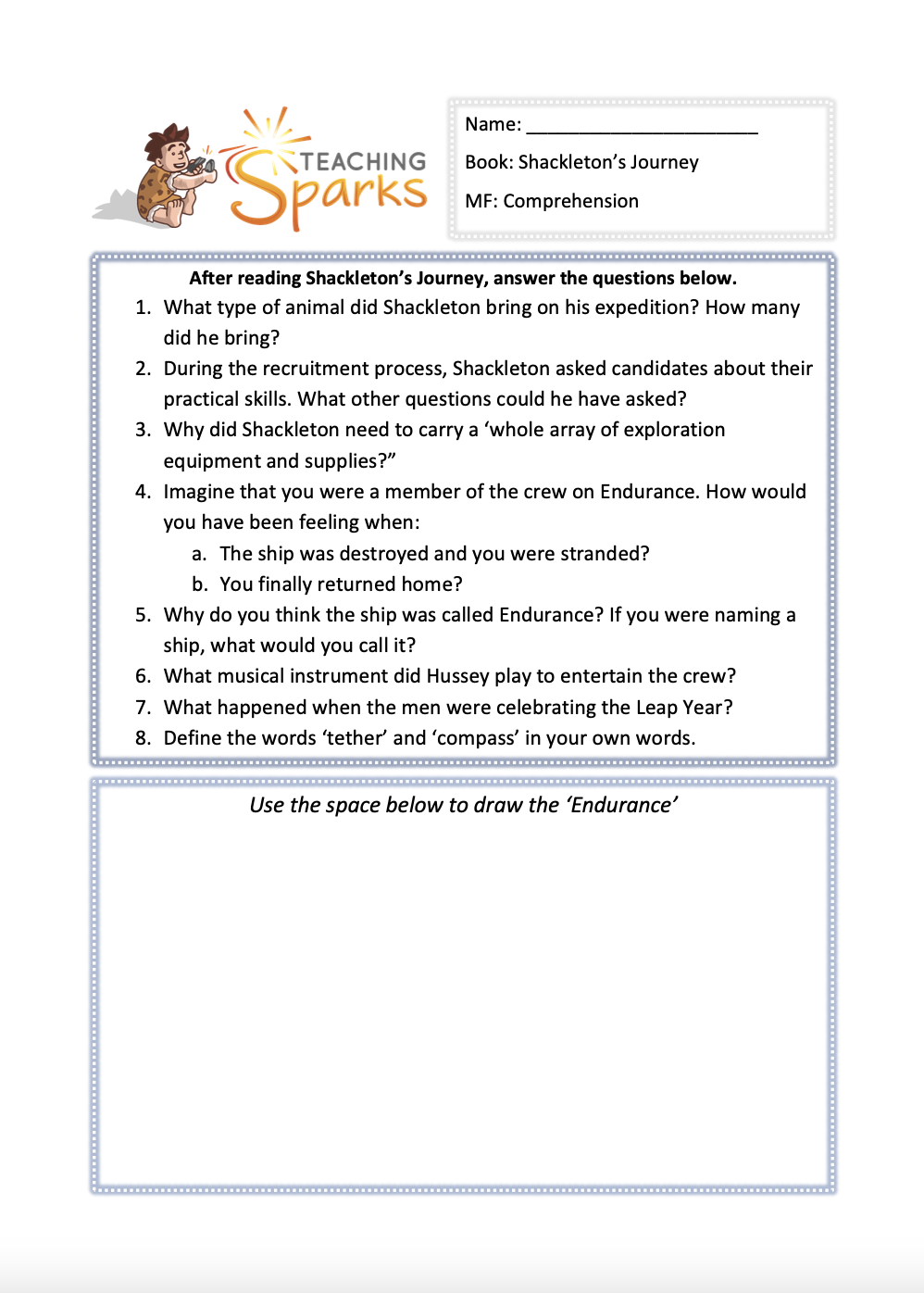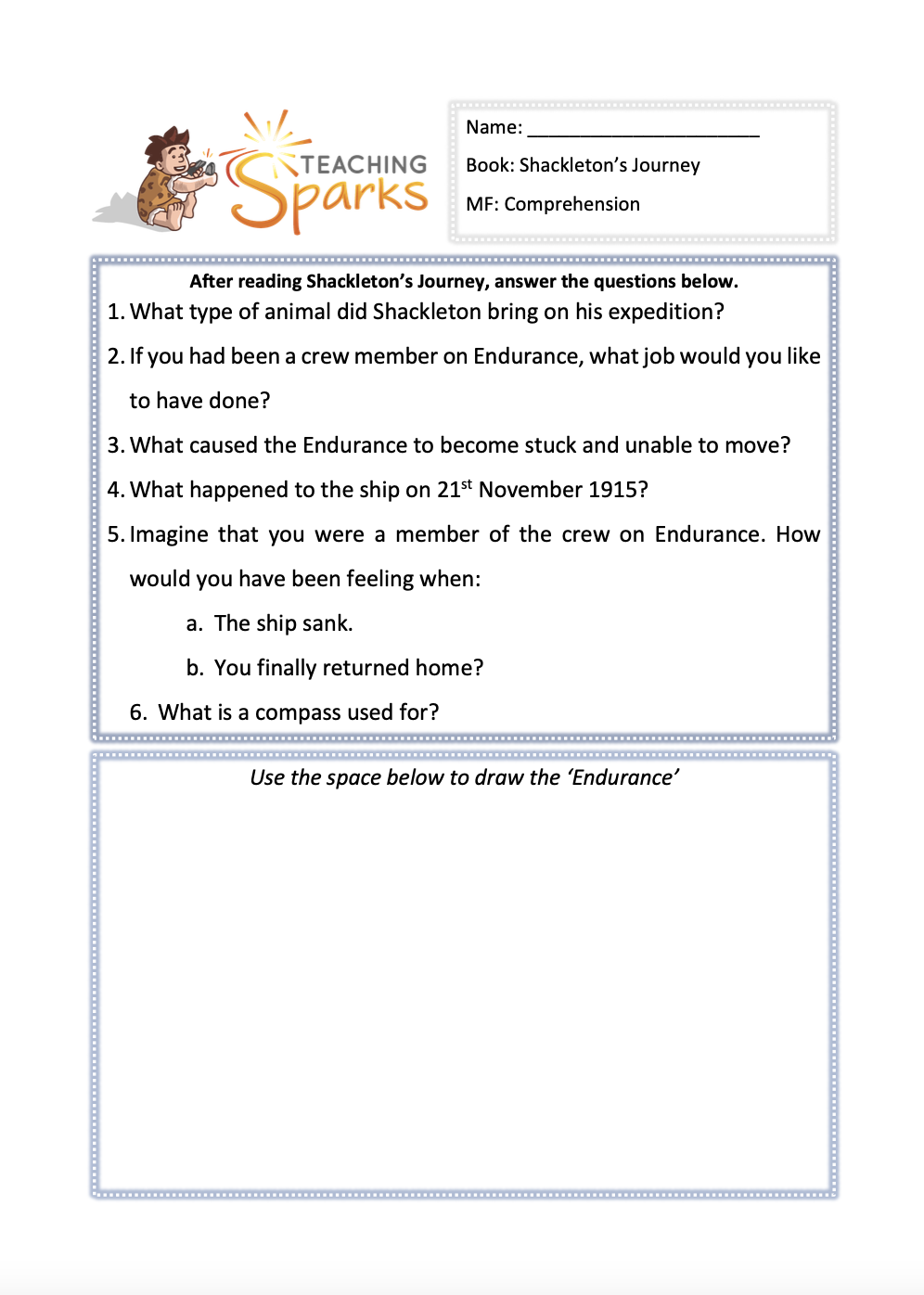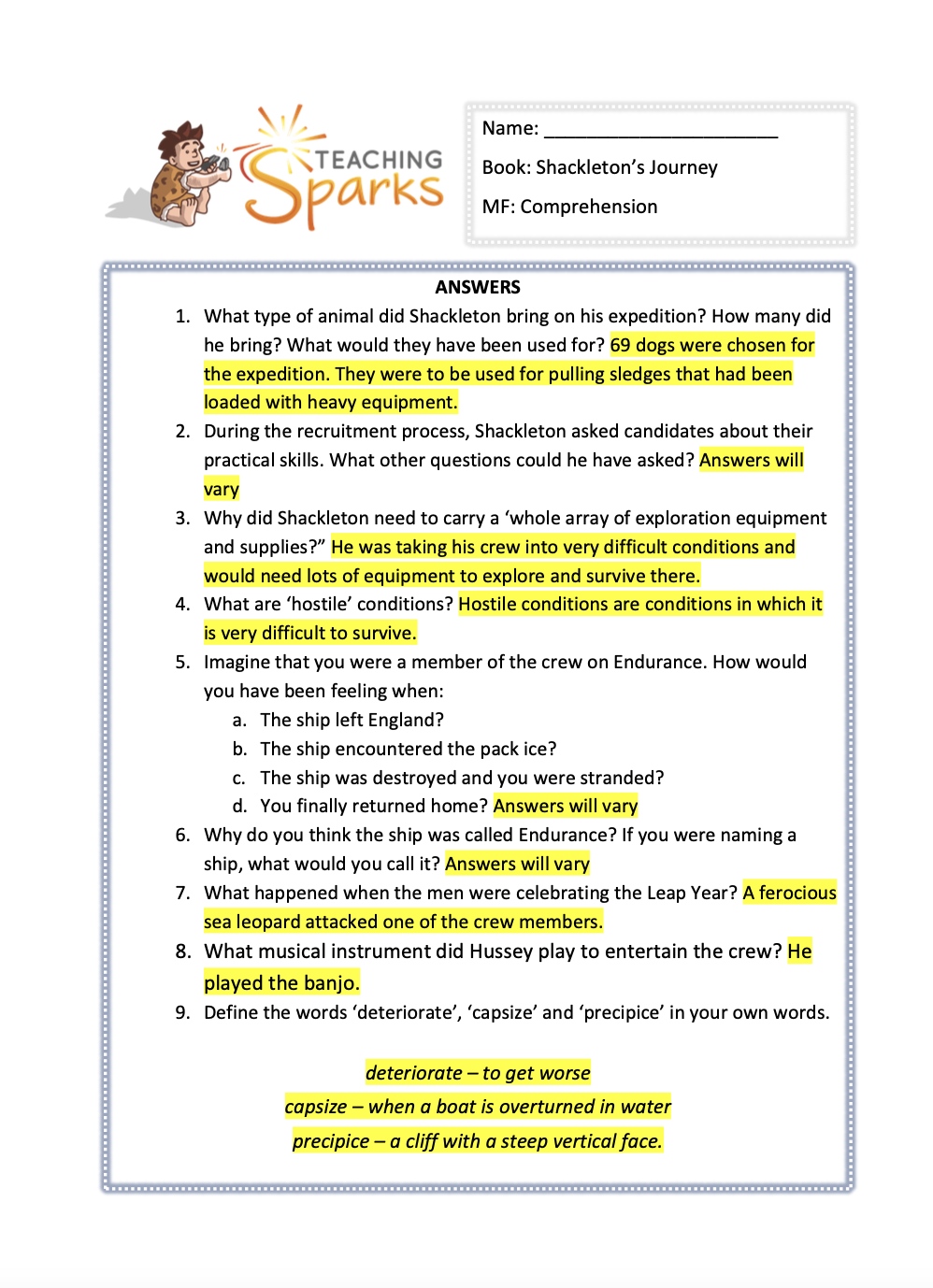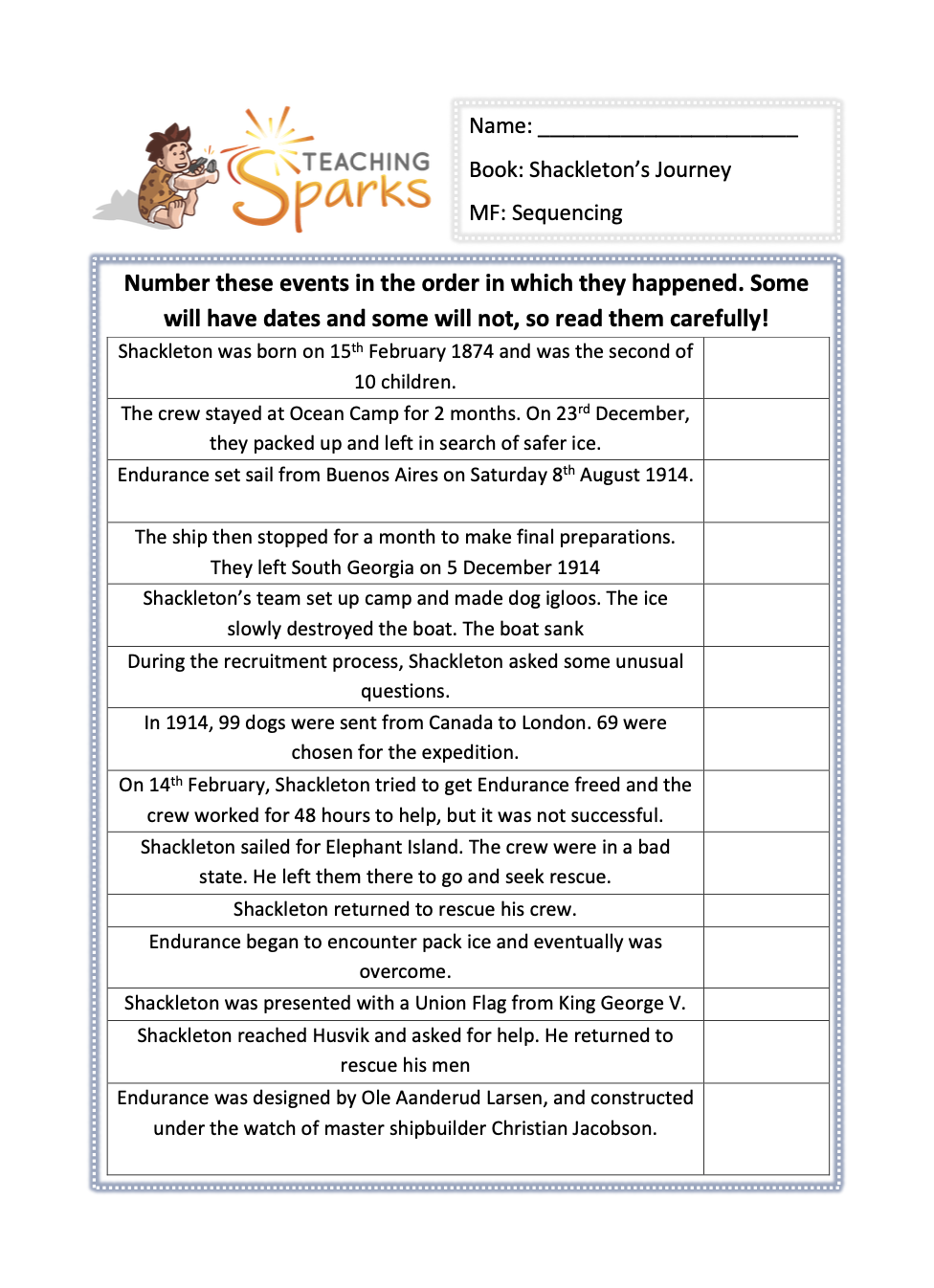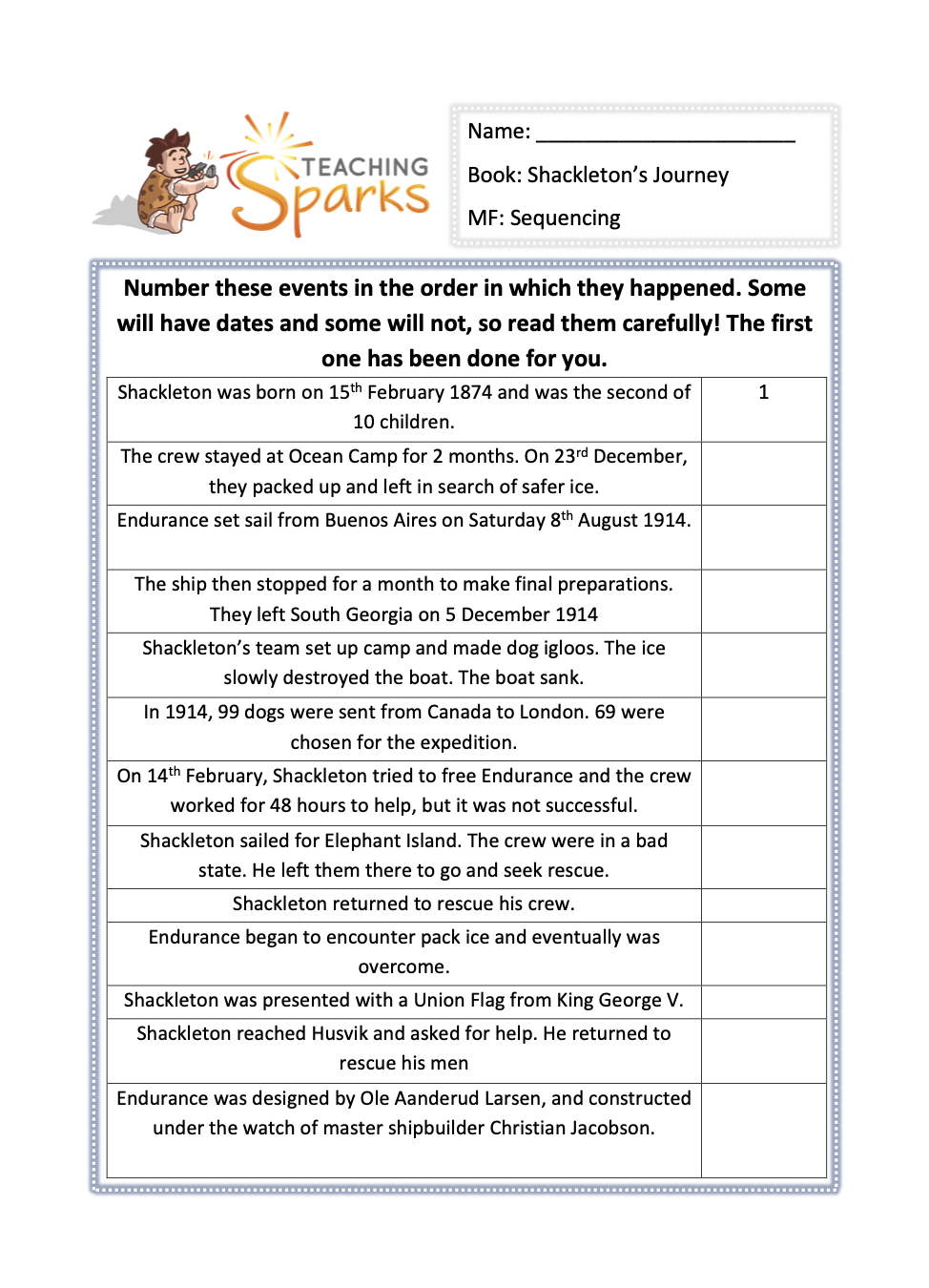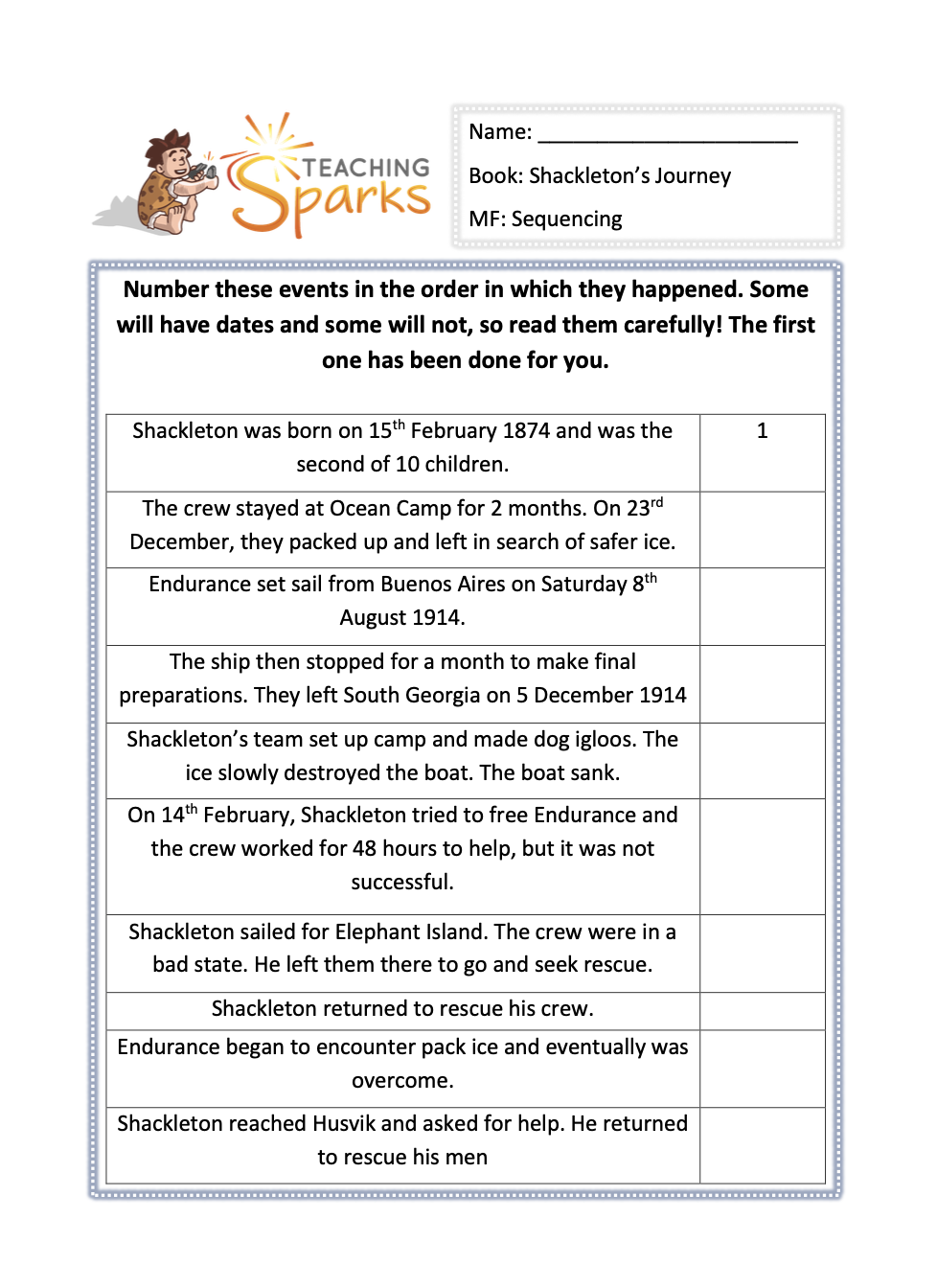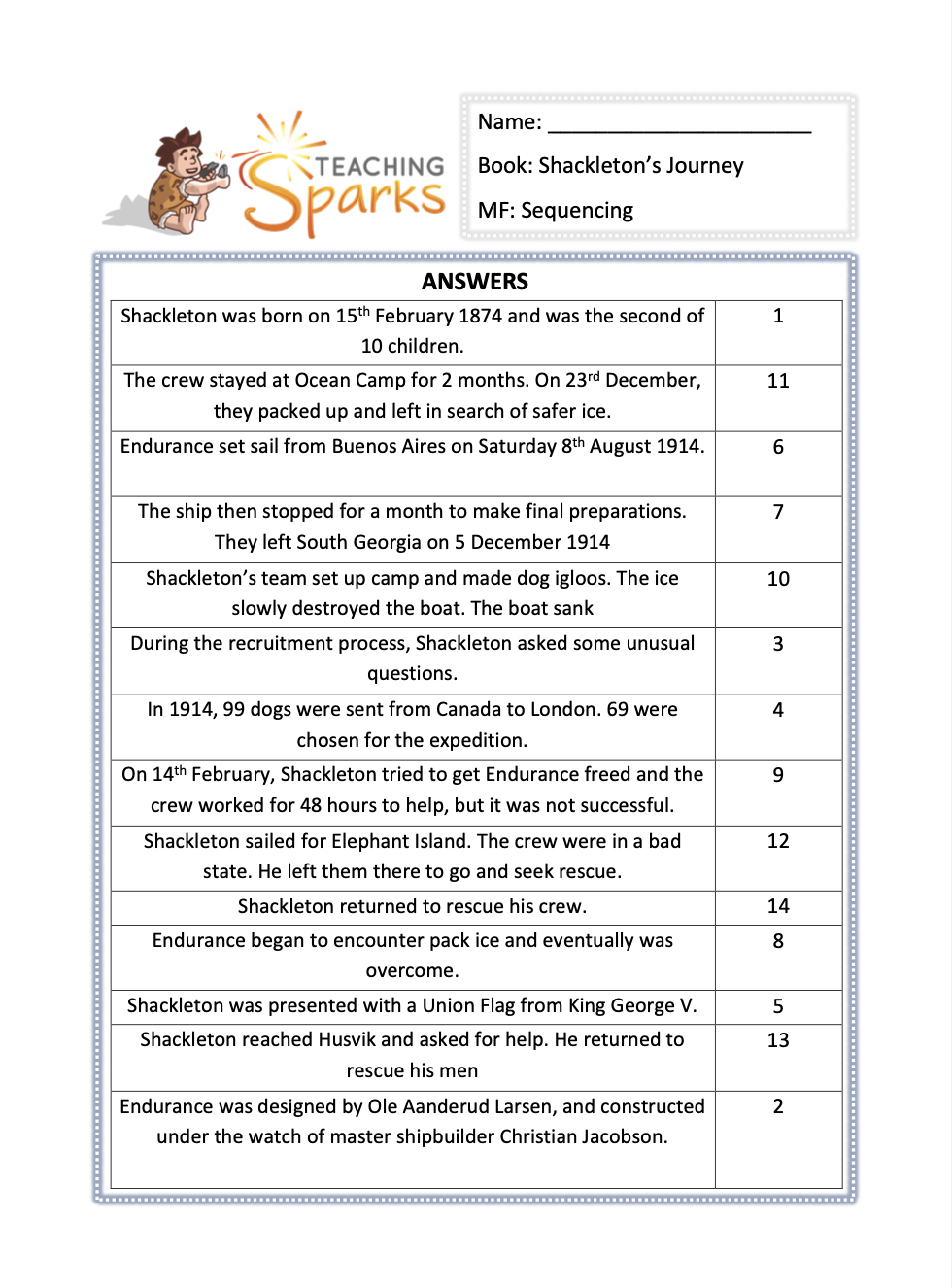Shackleton’s Journey
Shackleton's Journey by William Grill
In the last days of the Heroic Age of Exploration, Ernest Shackleton dreamed of crossing the frozen heart of Antarctica, a place of ferocious seas, uncharted mountains and bone-chilling cold. But when his ship, the Endurance became trapped in the deadly grip of the ice, Shackleton’s dreams were shattered. Stranded in a cold, white world, and thousands of miles from home, the men of the expedition set out on a desperate trek across the ice in search of rescue.
Shackleton’s Journey is the true story of how Shackleton and his crew managed to survive this epic adventure, and a testament to their great courage and endurance.
Main Focus: Alphabetical Order
This activity focuses on pages 7-8 of the book and alphabetical order.
In 1914, 99 dogs were sent from Canada to London. 69 of these dogs were then chosen for the expedition. They gave them all names; and some were named after famous people and members of the crew.
Some of the names were:
Wolf, Sooty, Paddy, Chips, Tim, Dismal, Bob, Martin, Hercules, Noel, Jamie, Alti, Jasper and Roy.
Your Year 3 / Year 4 class will put some of the names into alphabetical order.
Unlock ResourceMain Focus: Past and Present Tense
This activity focuses on pages 14-24 of the book and tense.
Your LKS2 class will identify verbs in the sentences that have been chosen from the Shackleton’s Journey book and identify whether they are past or present tense.
Unlock ResourceMain Focus: Vocabulary Extension - Pages 4-28
In this resource, your class will explore some of the challenging vocabulary from pages 4-28 of the book.
Your class will use the words bank to complete the sentences.
We have differentiated this a number of ways and your class can even do an extension activity of looking up definitions, synonyms, antonyms etc.
Unlock ResourceMain Focus: Suffixes
This resource focuses on suffixes: -ing, -ful, -ly, -ible & -ness
A suffix is a group of letters which are added to the end of a word to make a new word. Your class will use the table in the resource to sort the words that end in the suffix -ing.
The words can all be found in the text of ‘Shackleton’s Journey’.
Unlock Resource
Main Focus: Sentence Openers
This LKS2 activity focuses on a range of sentence openers from the book.
Your class will begin to recognise the different openers used by the author by categorising them.
By recognising that there are different openers they can use, this will improve their literacy understanding and they can apply it to their independent writing.
Unlock ResourceMain Focus: Synonyms
Synonyms are words which have the same or similar meanings. We can use synonyms to make our writing more interesting.
In this whole class reading / guided reading activity, tour class will fill in the blanks in the resource with a synonym for the word in brackets.
Make sure to remind them to read the rest of the sentence carefully to check that their choice of synonym makes sense. The first one has been done for them.
Main Focus: Apostrophes
This activity focuses on apostrophes and is from Page 28 of the book to the end.
This resource covers apostrophes for possession and contractions.
Unlock ResourceMain Focus: Spelling and Applying (including homophones)
This resource is linked to pages 51 and 52 of the book and spelling.
Your class are tasked to find all the spelling errors in the passage and then write the correct spelling of each word above.
We have also included homophones in this activity to help children identify words with different spelling and meanings, to help them put such words into the correct context.
Unlock ResourceMain Focus: Comprehension
This is a comprehension for the book Shackleton’s Journey and focuses on the whole book.
Your Year 3 / Year 4 class will be encouraged to use their knowledge of the story, their understanding and apply their knowledge to answer the questions.
Unlock ResourceMain Focus: Event Sequencing
In this activity, your class will sequence the main events from the story in chronological order to show their understanding.
Your Year 3 / Year 4 class will number each event from 1-14 to complete the story sequence.
Unlock Resource
